San Basilio de Palenque is the first free African town in the Americas. Founded by escaped enslaved people in the 16th century, San Basilio de Palenque is known today for its rich heritage, characterized by a unique blend of African traditions, Spanish influences, and indigenous customs.
Also referred to as just “Palenque,” the town is famous for its distinct language, gastronomy, and history.
I had the pleasure of spending the day in San Basilio de Palenque while traveling in Cartagena, and this blog post will share insight on what I learned about this historic town and what you can expect to see if you take a trip here.
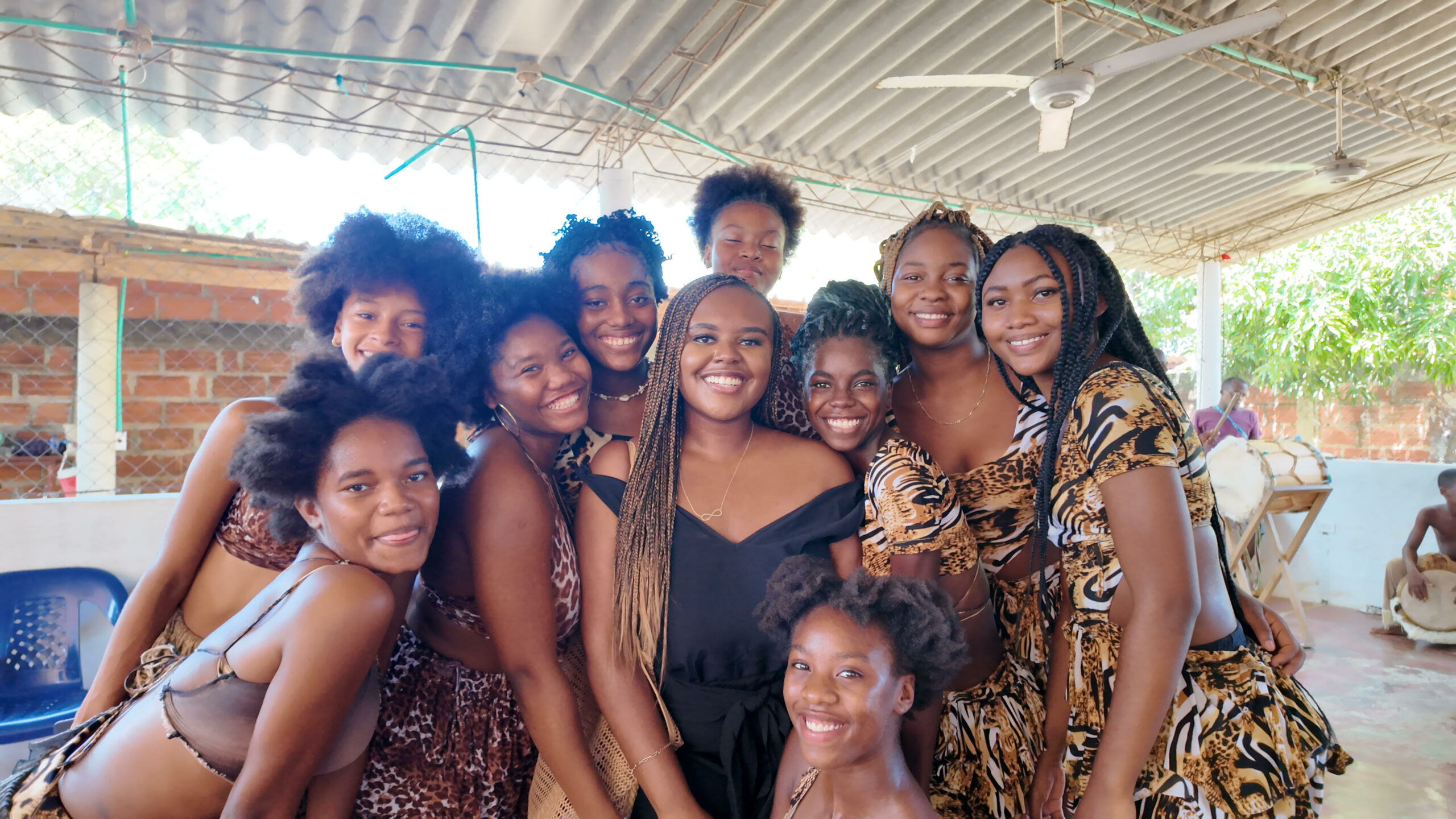
Table of Contents
ToggleDisclaimer: This blog post may contain affiliate links which means that if you book one of these activities using my link (which I know you will because you loved how helpful this blog post is *wink*I am going to receive a small commission at no additional cost to you. Thank you for supporting BCJ!
Other Blog Posts On Cartagena:
- Cartagena Travel Guide: What to Know, Things to Do, & More
- Using Uber in Cartagena: 6 Things to Know
The History of San Basilio de Palenque
I booked my tour through Airbnb with host Maria Isabel. The morning of the tour, we met her at Plaza de la Aduana, the very place where it was later explained to once be the main slave market.
We were greeted with a warm hug and welcome from Maria Isabel and began the 1.5-hour journey to San Basilio de Palenque.
Our group was composed of a majority of Black women, which was refreshing.
On the bus ride, Maria Isabel began the tour by providing a background on Palenque and how she got started hosting tours.
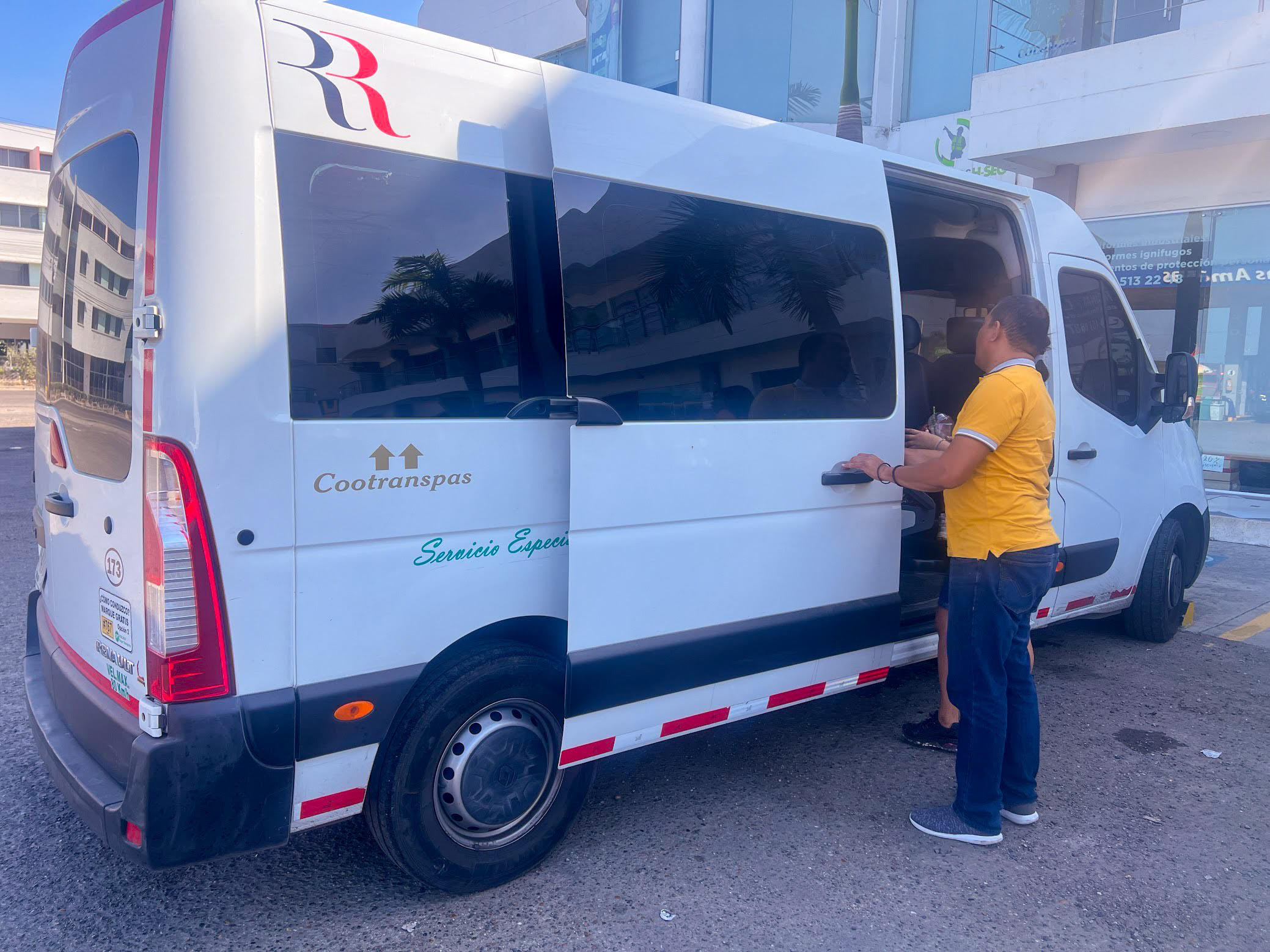
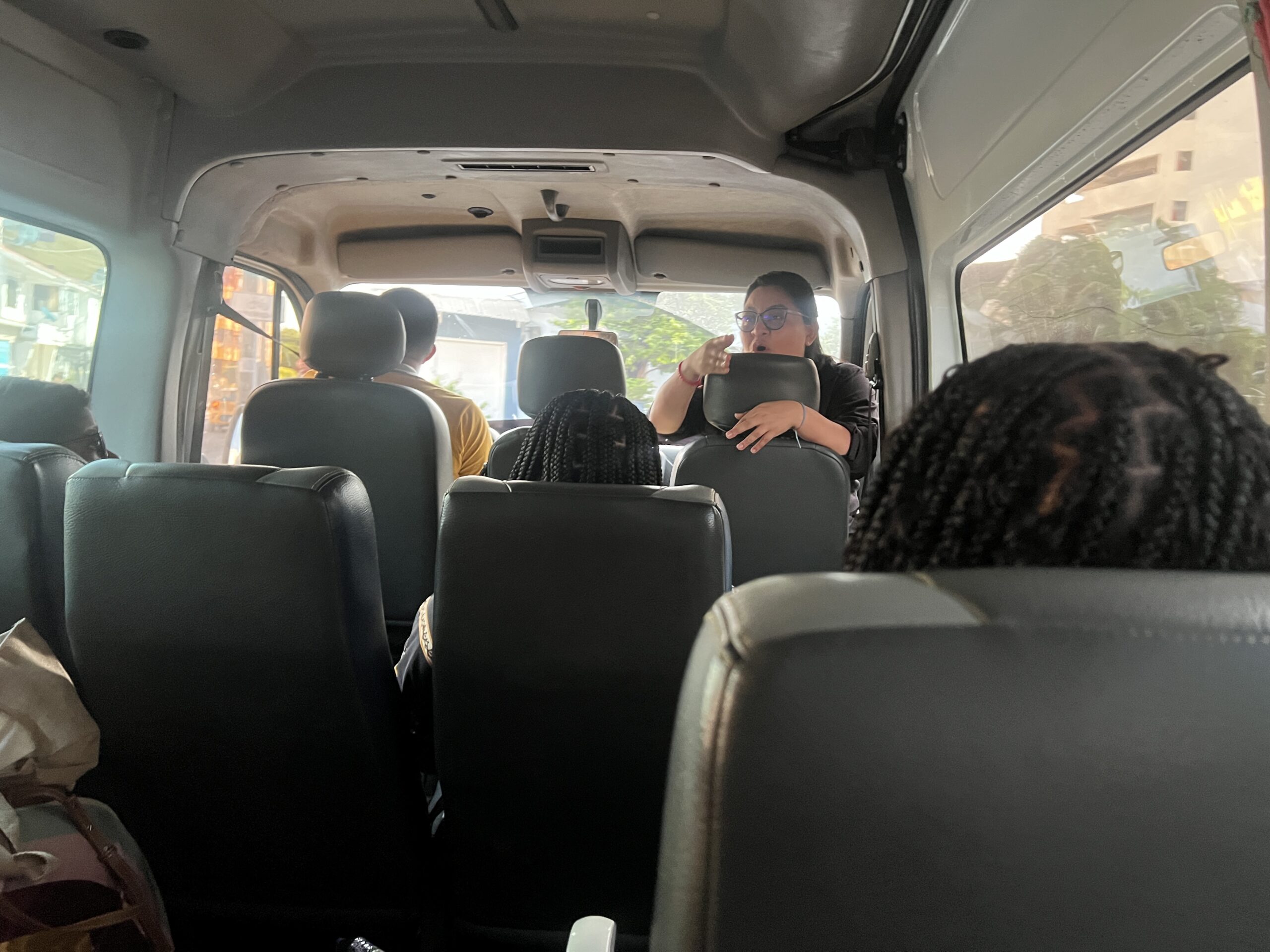
The transatlantic slave trade brought several hundred thousand Africans to Colombia, where they were sold and forced to work on plantations, in mines, and in other industries under brutal and oppressive conditions.
The cost of slaves depended on factors like gender and age. Young women were able to give birth, so they were of higher value.
How strong the enslaved person was also determined their value. Keep in mind that many enslaved persons arriving in Colombia were subjected to unimaginable hardships during the long journey known as the Middle Passage, enduring cramped and unsanitary conditions aboard overcrowded slave ships.
Many Africans did not survive the voyage, succumbing to disease, malnutrition, or mistreatment by the slave traders. Despite this, strength was important because men were used to working on farms and women as housekeepers for European children.
The Founder of San Basilio de Palenque
At the end of the 16th century, Benkos Biohó led one of the most significant slave rebellions in Colombian history. Biohó fled captivity as a slave, organized a community of escaped slaves, and founded what would become known as San Basilio de Palenque.
Maria Isabel made it clear to inform us that San Basilio was not the only Palenque. It was just the only one able to survive.
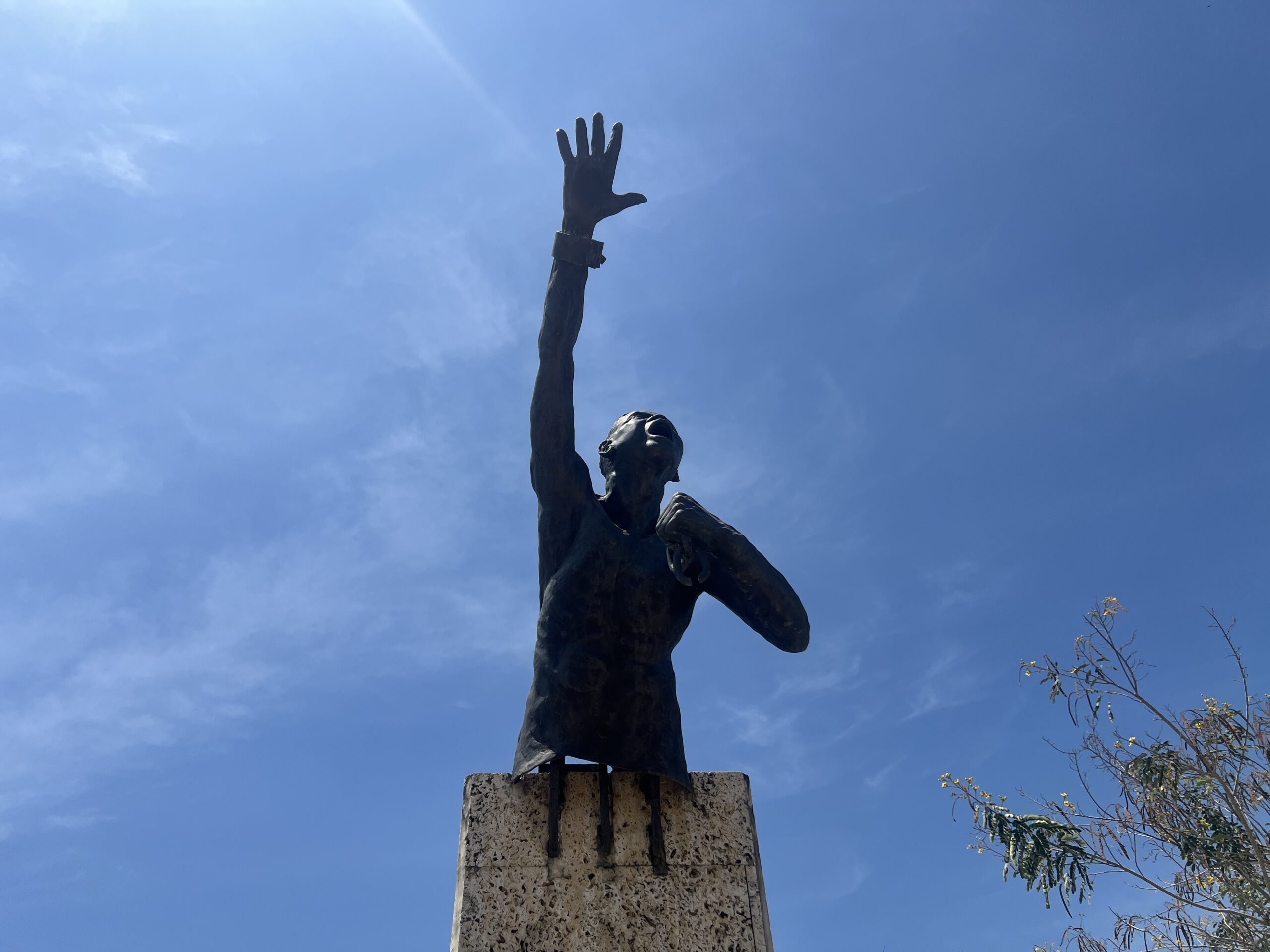
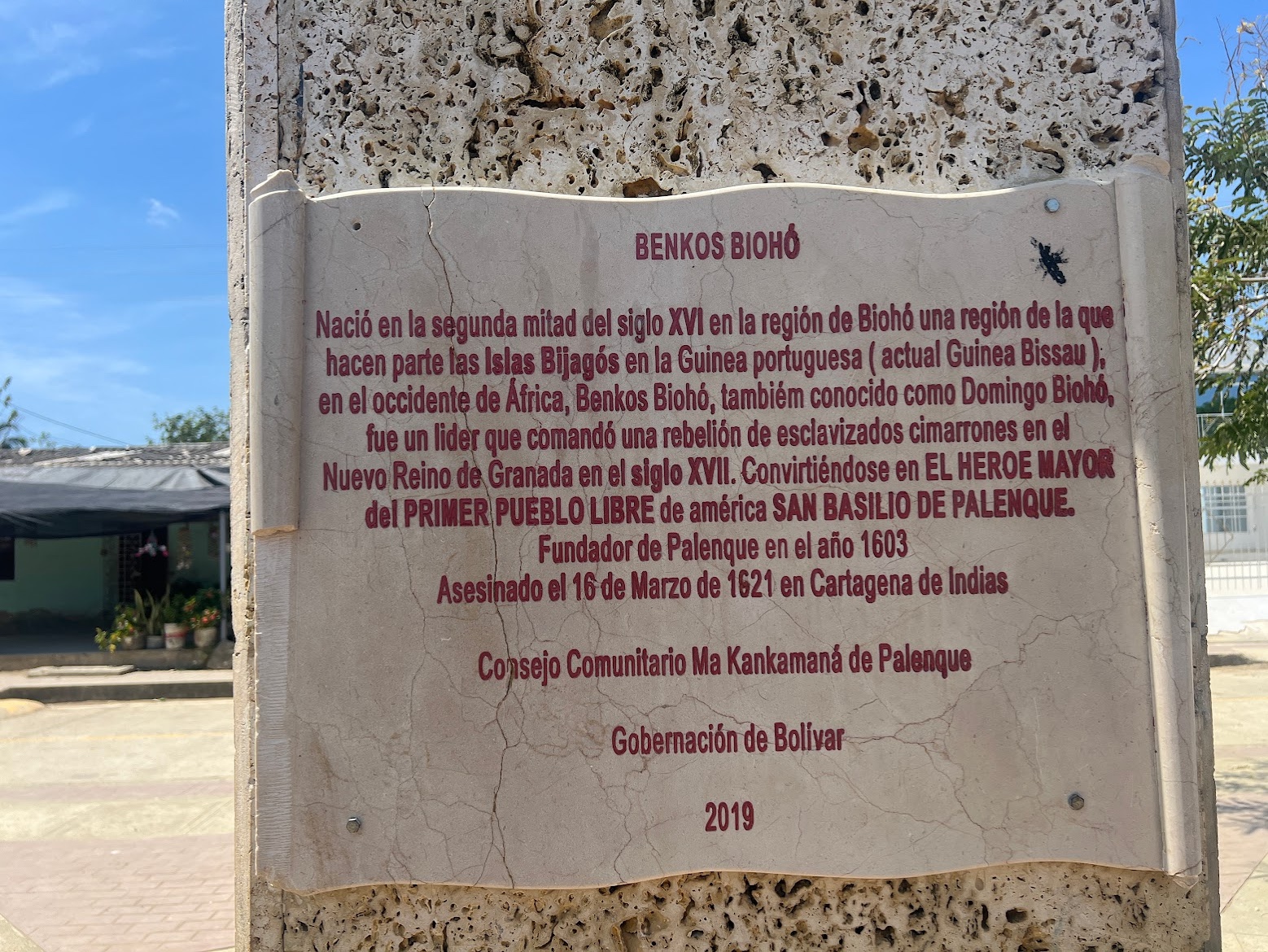
The term “Palenque” comes from the word “Palo,” which means woods. In the context of San Basilio de Palenque, it means village or settlement.
Benkos Biohó’s legacy as a pioneer of Afro-Colombian resistance is celebrated not only in Colombia but also throughout the African diaspora, symbolizing the enduring spirit of resilience and liberation.
Palenque was the first piece of free land for Africans, while Haiti was the first free Black nation.
San Basilio de Palenque Today
After our 1 hour and 30-minute journey to Palenque, which was filled with conversations about being Black in the United States, traveling, and introductions, our day in the town commenced.
Meeting the Only Black Woman Tour Guide
Stepping out of the van, we were greeted by María Belén, the only Black woman tour guide in Palenque. It was explained that conducting tours to the town had become a very male-dominated field.
I absolutely love that Maria Isabel is intentional about giving her opportunities to conduct tours for her travel groups to Palenque and that we got to experience the town with her.
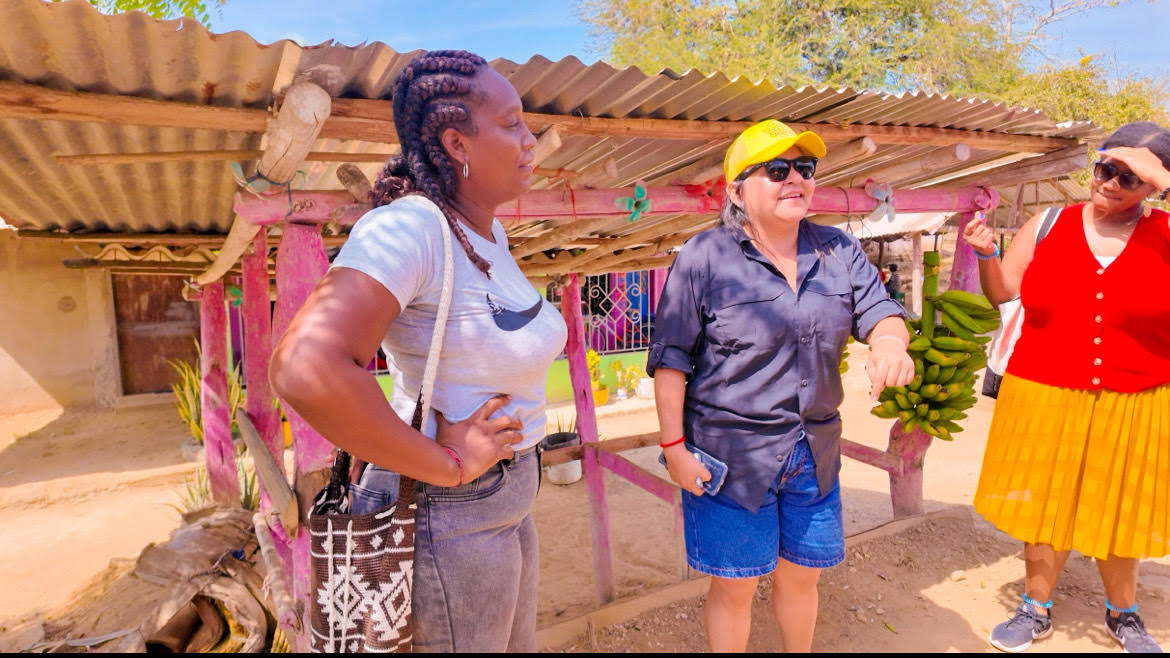
We learned that in Palenque, there are 436 families and 421 houses. In the town, the traditions of food and language, feel, braids, and clothing from Africa have been kept in the culture.
Batata: The Local Drumming School
In San Basilio de Palenque, drums are more than just musical instruments. They represent freedom and the strategy slaves once used to escape.
Enslaved Africans seeking liberation from the oppression of colonial rule used drumming to convey messages, organize resistance, and preserve their cultural heritage in the face of adversity.
Our first official stop in Palenque was at Batata, the local drumming school. We were greeted with high energy, pulsating beats from the drums, and dozens of students ready to showcase their talent to our group.
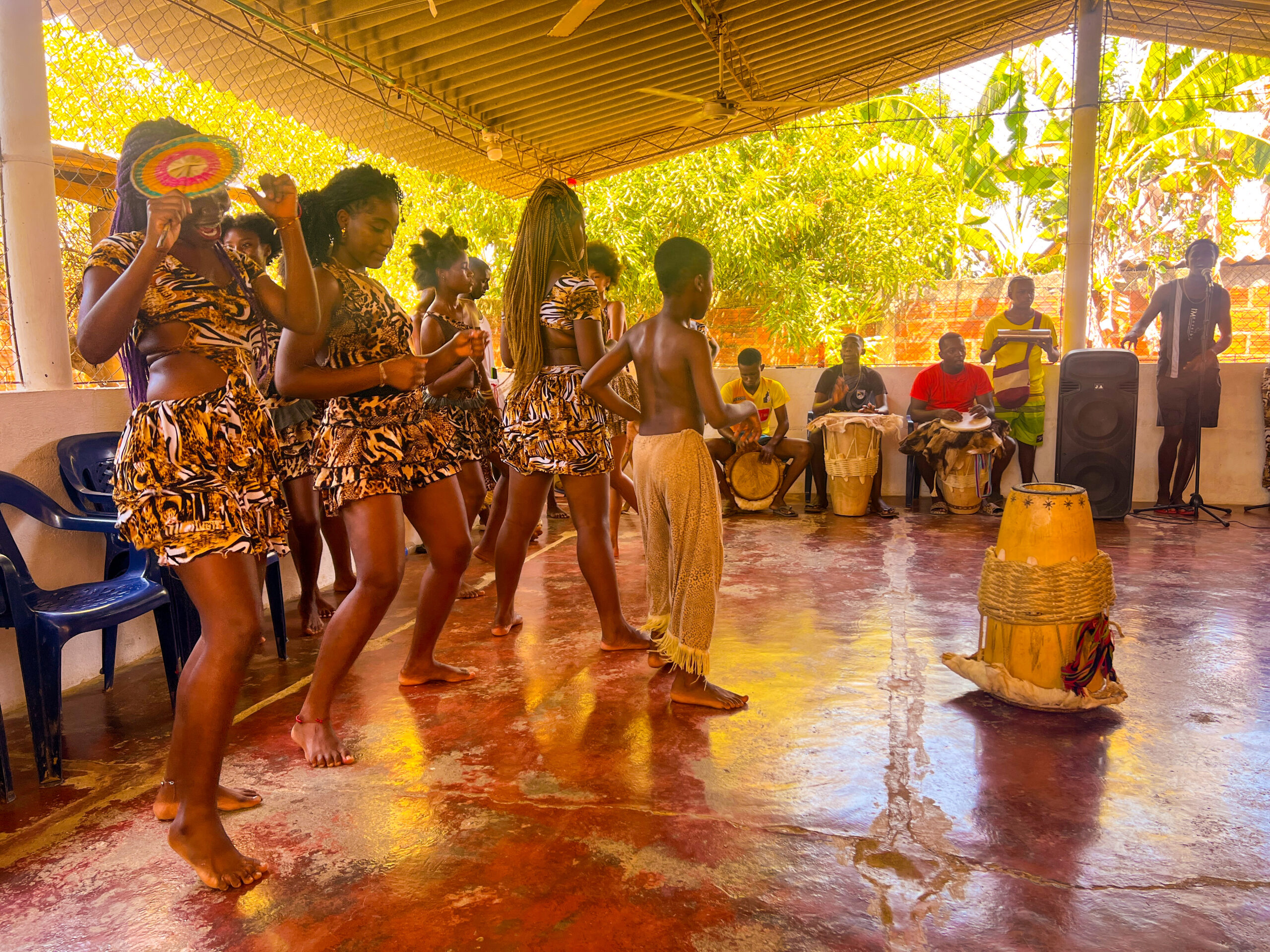
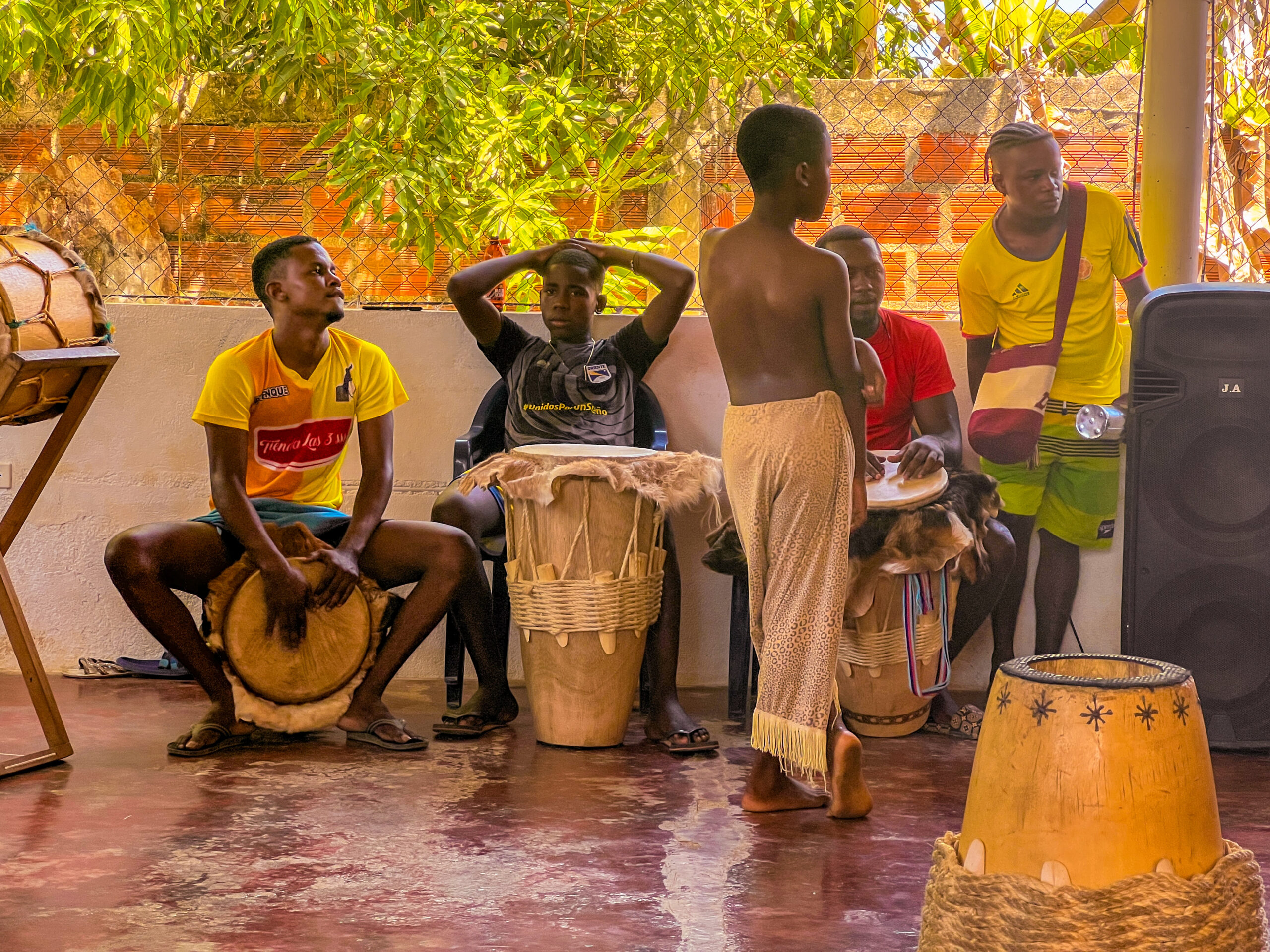
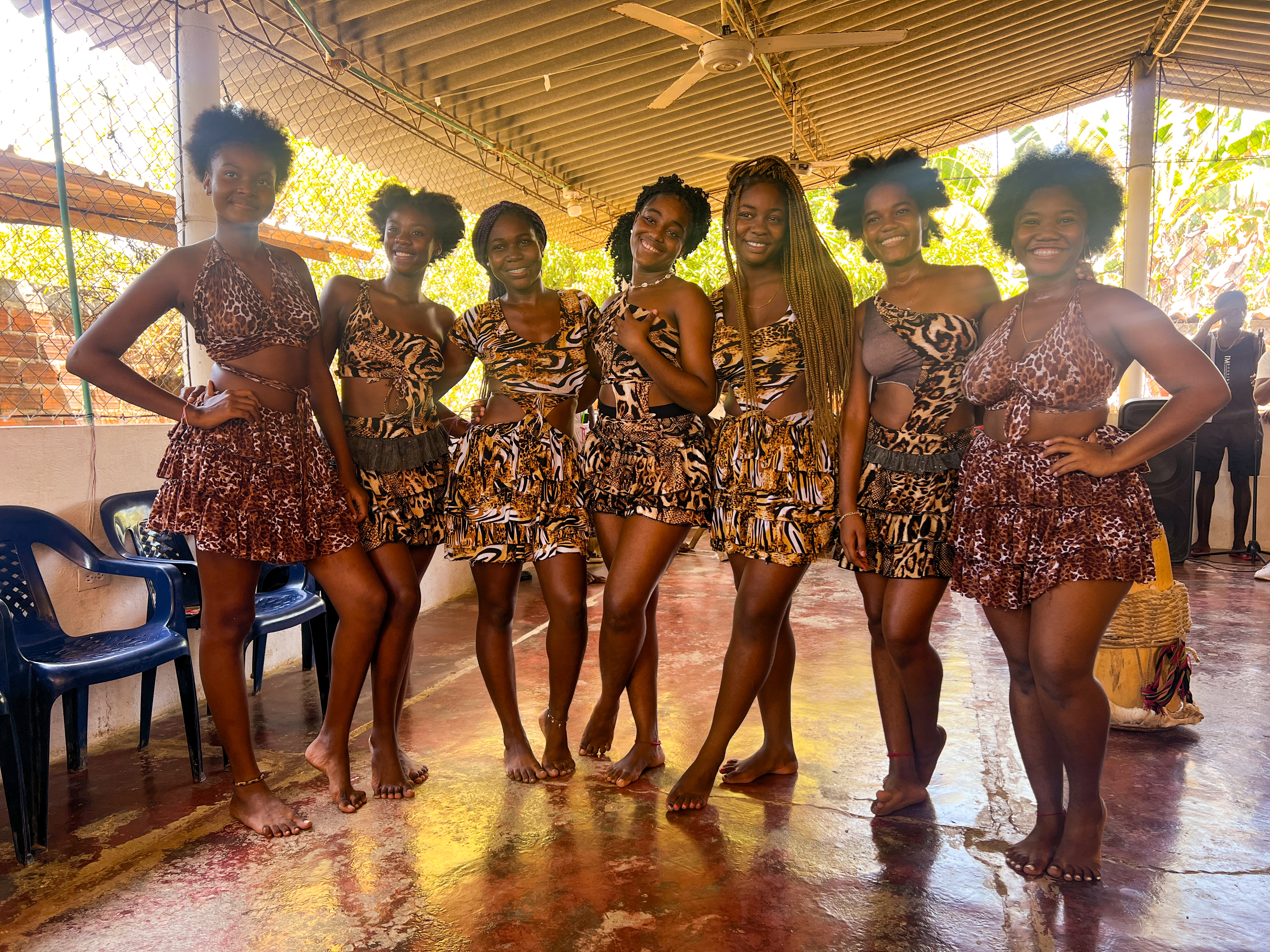
The students played and danced three different types of music that represented the roots of their culture, one of which was Mapalé.
“A dance of seduction, characterized by its lively and flirtatious movements. Dancers, adorned in colorful attire, move their bodies to the infectious rhythm of drums, maracas, and other traditional percussion instruments. The dance exudes sensuality, with performers engaging in intricate footwork, hip gyrations, and expressive gestures that symbolize the courtship and romantic attraction between partners.” according to Colombia One.
The dancers were energetic and had an infectious enthusiasm that definitely passed on to us as audience members. With every move, the passion radiated off their bodies.
From the fast footwork to the electrifying routines of traditional folk dancers, this was definitely my favorite part of my visit to Palenque.
Drumming in Palenque is a vital aspect of cultural expression and communal celebration. From religious ceremonies to social gatherings, drumming accompanies various rites of passage, festivals, and rituals, infusing them with energy, rhythm, and spirit.
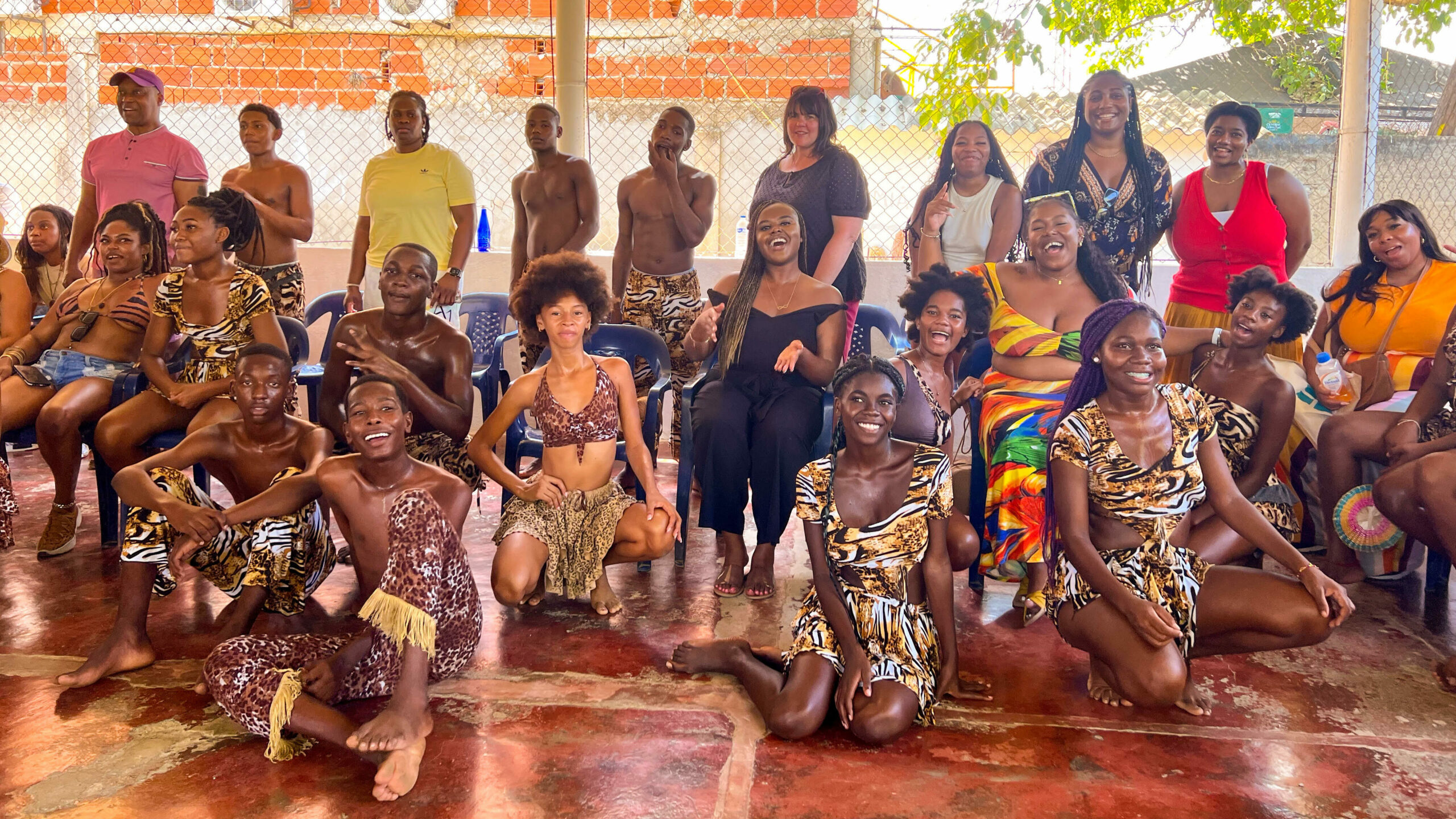
Main Square of Palenque
As the tour progressed, we made our way to the main square of Palenque, where the statue of Benkos Bioho lies, and the main church of Palenque.
The Statue of Benkos Bioho
The main attraction of the Main Square is, without a doubt, the statue of Benkos Bioho. Bioho was born in the Bioho region of Guinea Bissau in West Africa. Bioho, also known as Domingo Bioho, led a rebellion of enslaved people, leading to Palenque being found.
An interesting fact about Bioho is that while the statue represents him, there are no actual pictures to prove that he looks like the statue.
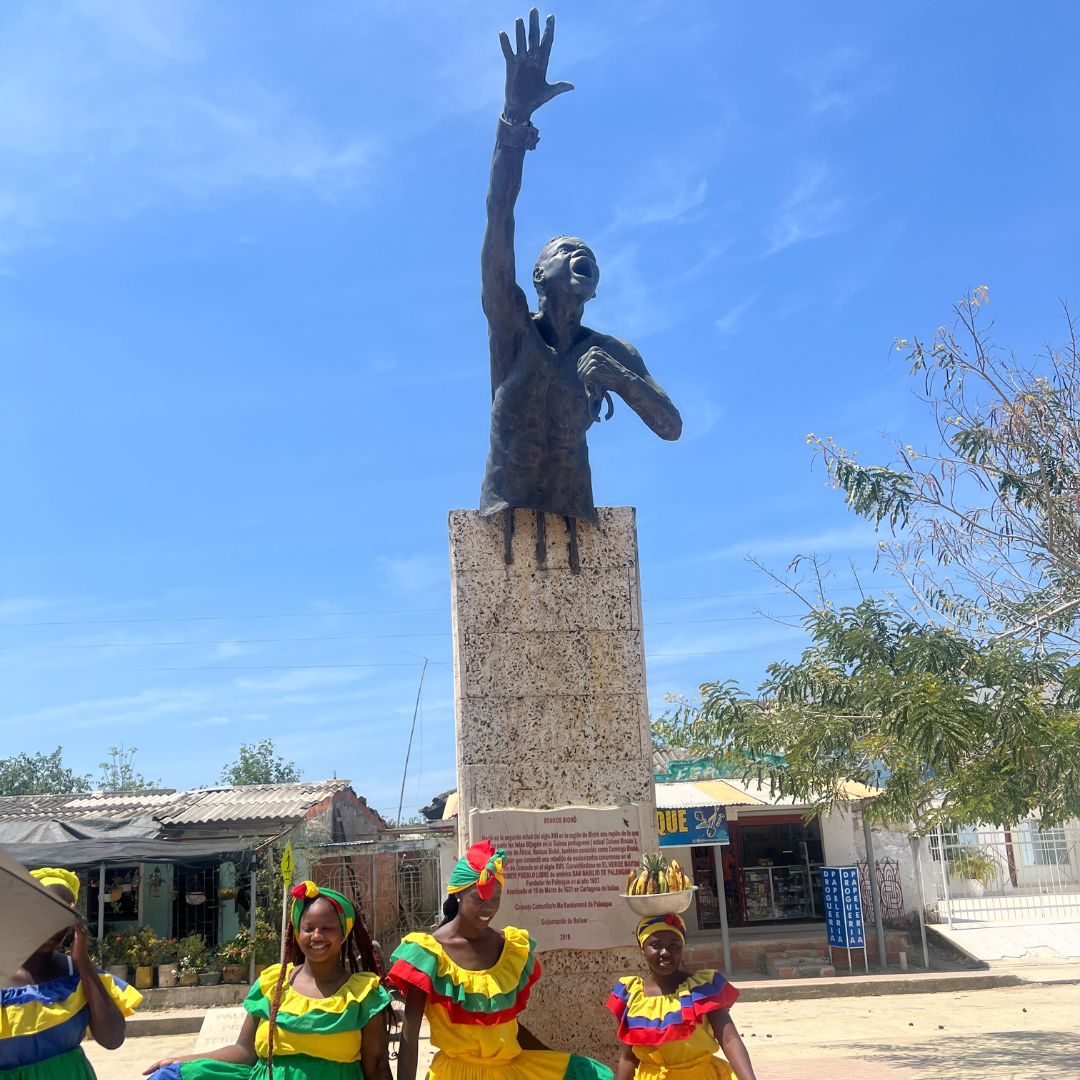
The Main Church in Palenque
The church in San Basilio de Palenque holds significant cultural and historical importance as a symbol of the town’s spiritual heritage.
Today, it remains a focal point of religious life in Palenque, hosting religious celebrations and cultural events where faith, culture, and history are combined in a sacred space that continues to inspire and uplift the community.
The Rap House
Music is a large part of the culture in Palenque so it was also interesting getting to visit a rap house in the town.
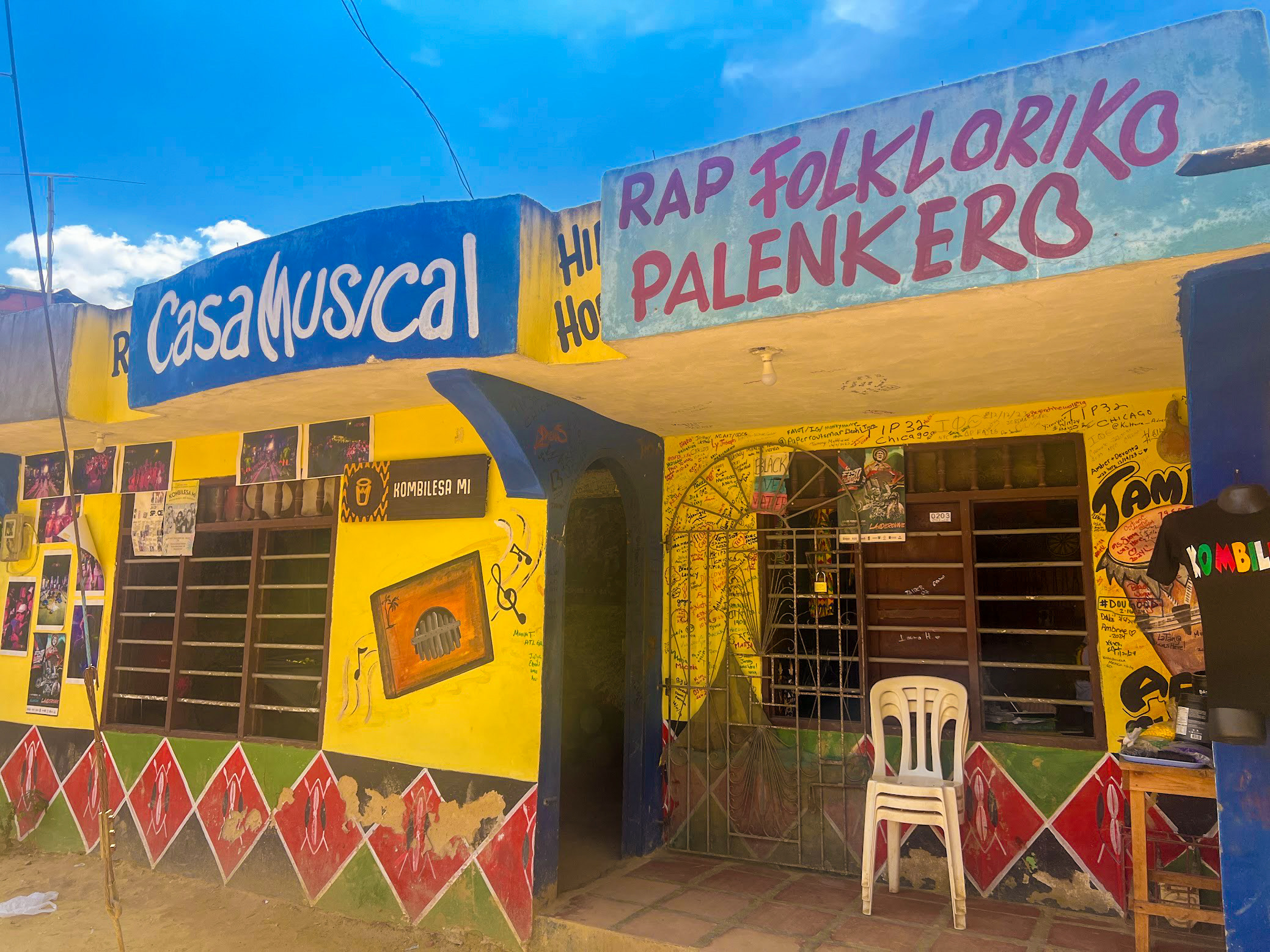
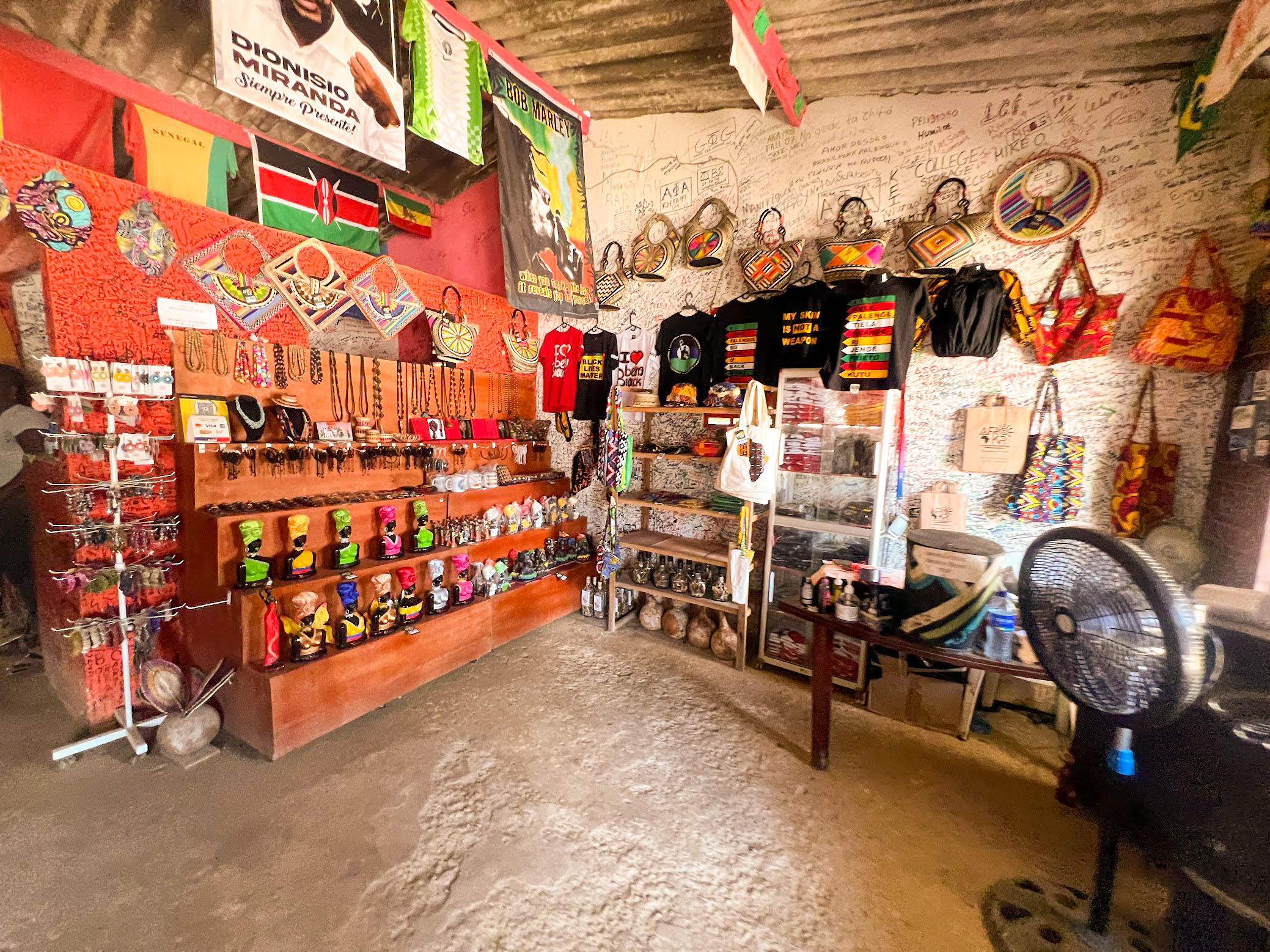
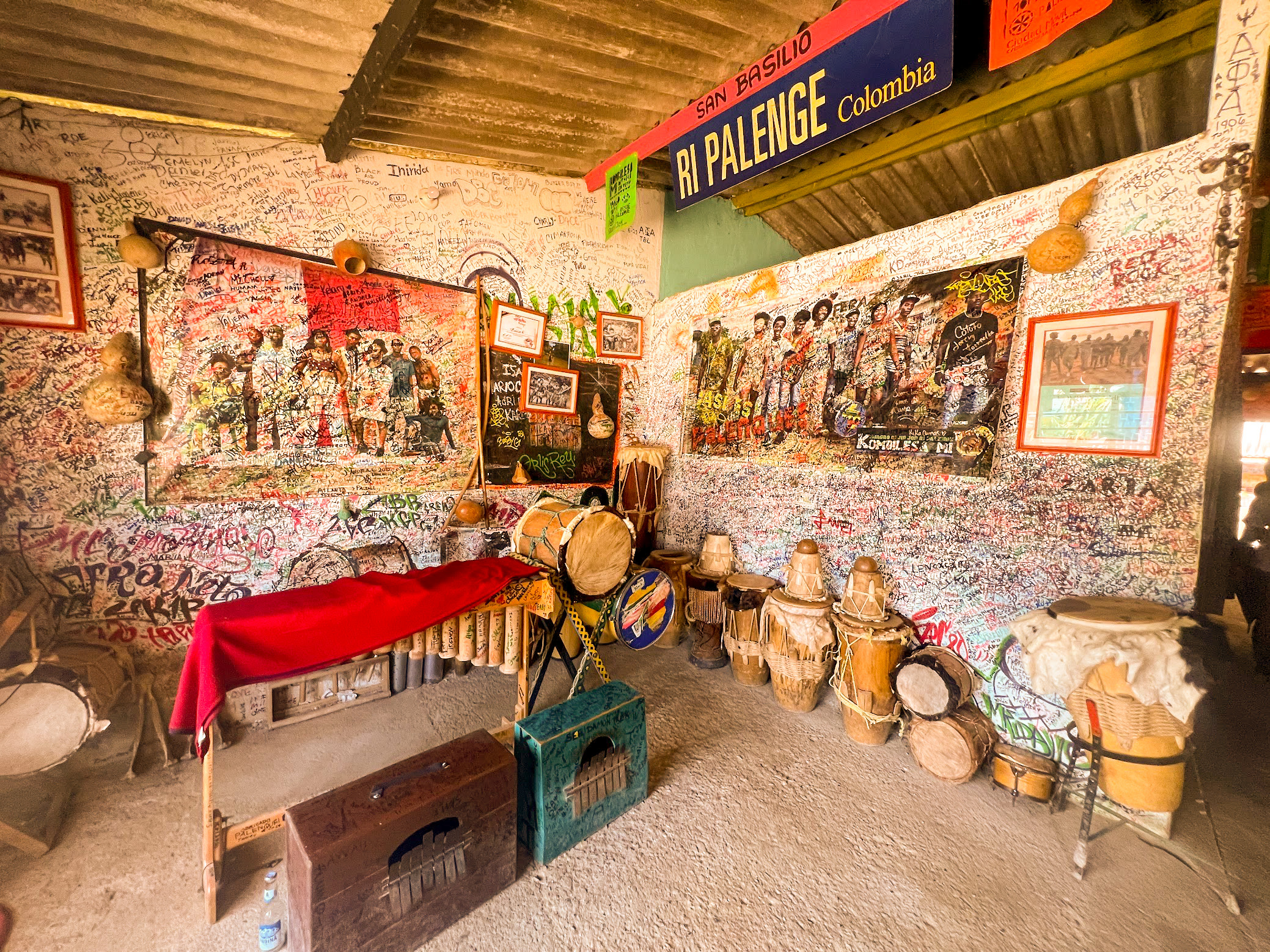
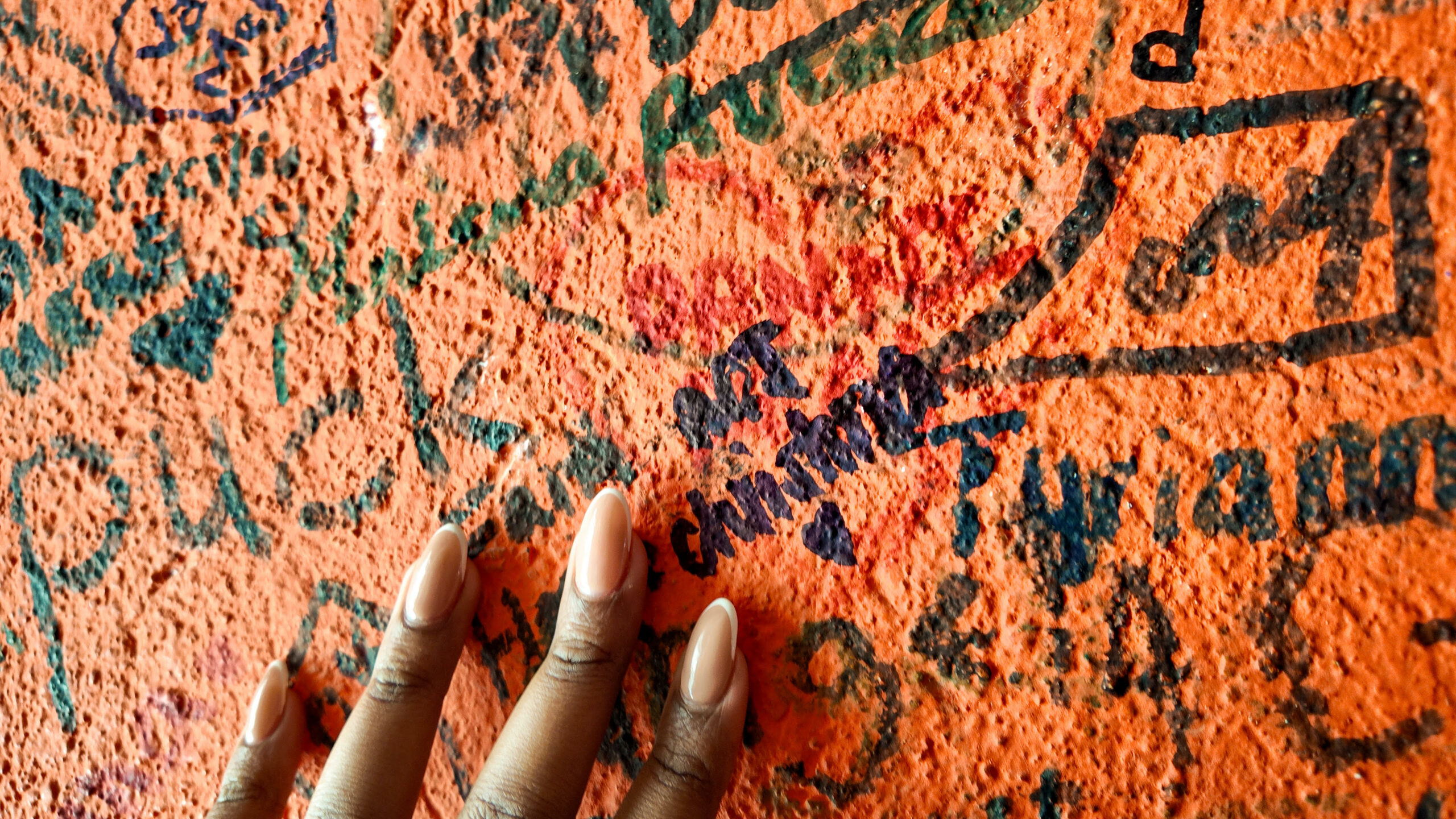
Boxing
Boxing is an integral part of Palenque’s story as well, as I would come to learn, and the most important sport in Palenque.
Antonio Cervantes, known as “Kid Pambele,” was a world champion from Palenque who put the town on the map and made Palenque visible to many.
Born in 1945 in San Basilio de Palenque, Kid Pambele became Colombia’s first world champion in boxing.
This achievement elevated Palenque’s profile and reinforced its cultural identity as a place of strength, courage, and resilience.
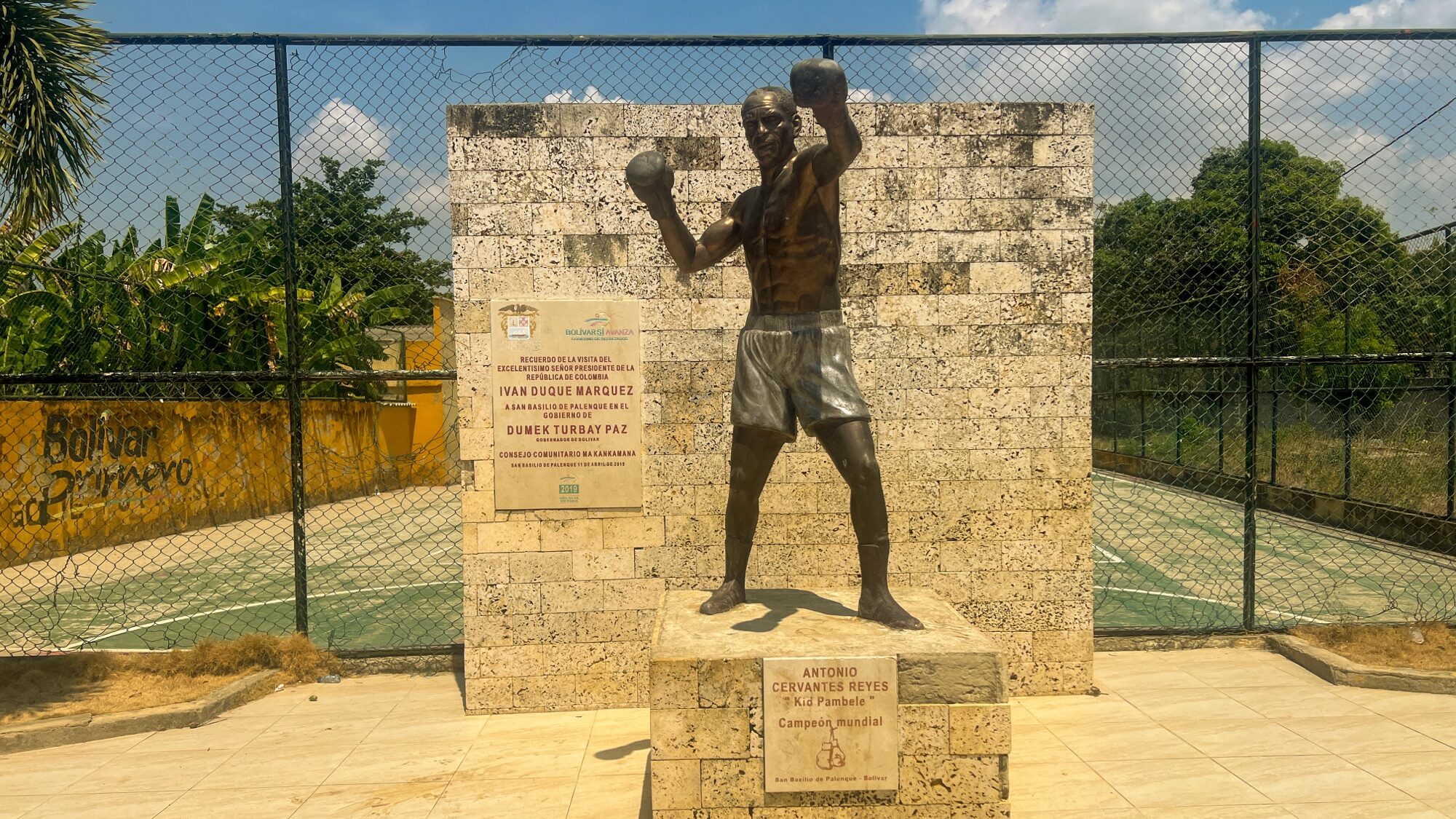
Black Heritage Pride
Black heritage pride in Palenque, Colombia, is deeply ingrained in the community and serves as a powerful source of identity that is seen at every turn when exploring the town.
The African roots continue to shape its collective consciousness and sense of belonging.
The people of Palenque take great pride in their African roots and heritage, celebrating their cultural traditions, language, music, dance, and spiritual practices.
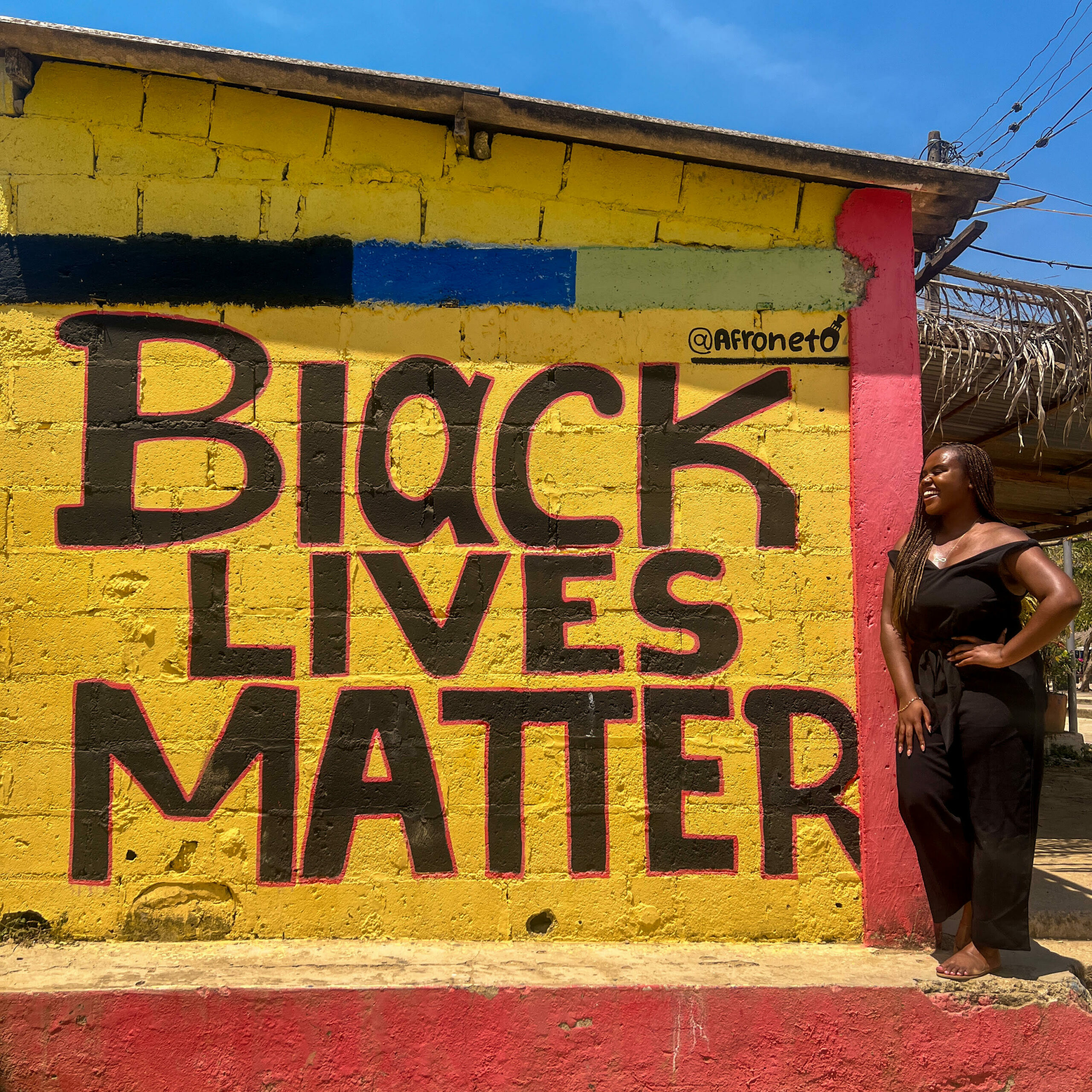
The community actively advocates for the recognition of Afro-Colombian rights, representation, and inclusion in broader society, which has been successful.
The pride of the Black heritage in Palenque is prevalent, and their commitment to preserving and promoting their heritage is admirable. Palenqueros inspires and empowers future generations to embrace their roots.
I was pleased to learn that there is a continued emphasis on culture instead of traditional subjects in schools, one more aspect of Palenque that I found impressive.
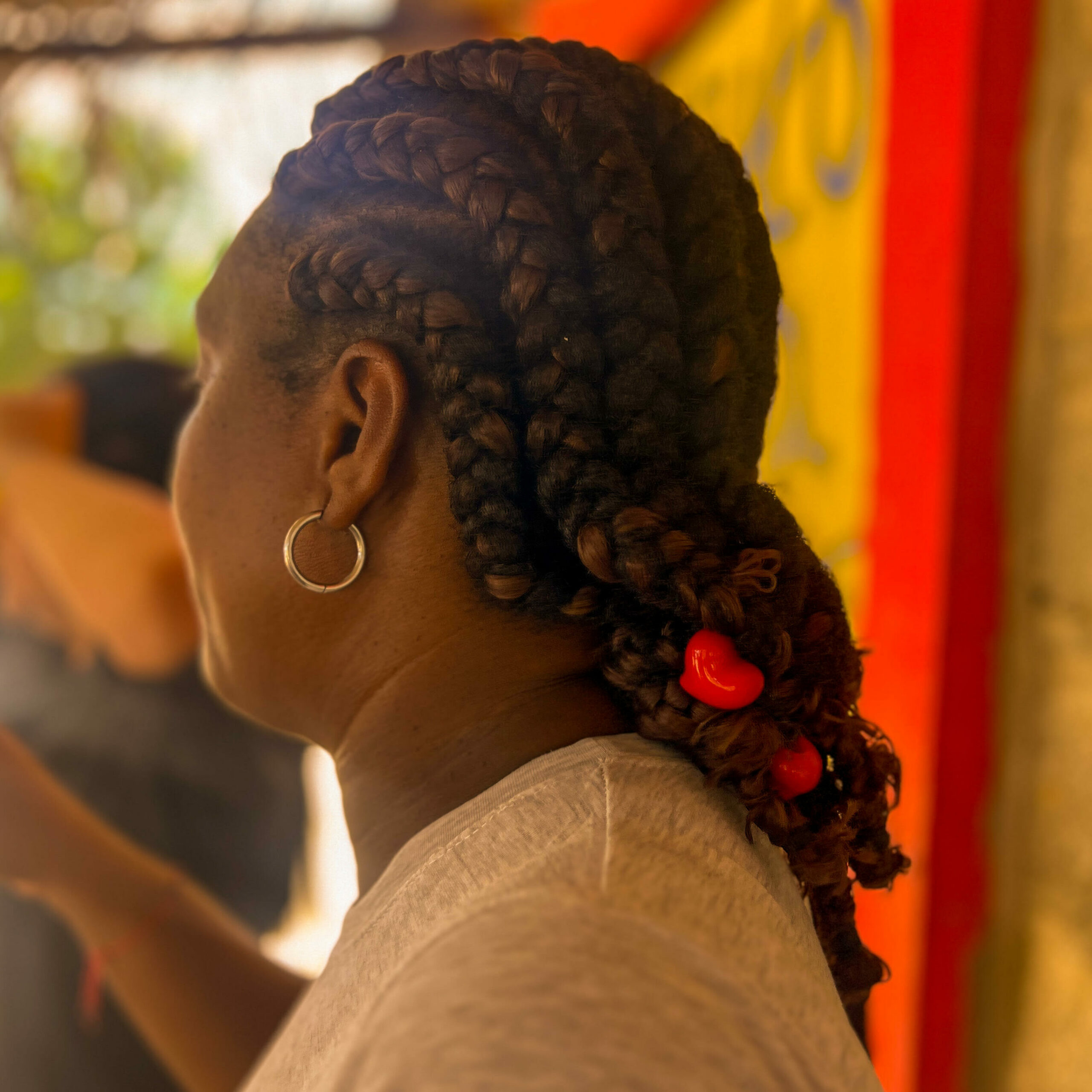
Concerns in Palenque
Losing the Palenquero Language
Despite how well the culture in San Basilio de Palenque has been preserved up until this point, there are still many preservation concerns.
One of the primary concerns is the preservation of the Palenquero language, which is derived from African languages and Spanish.
Palenquero is considered an endangered language, with fewer speakers and limited opportunities for its transmission to younger generations.

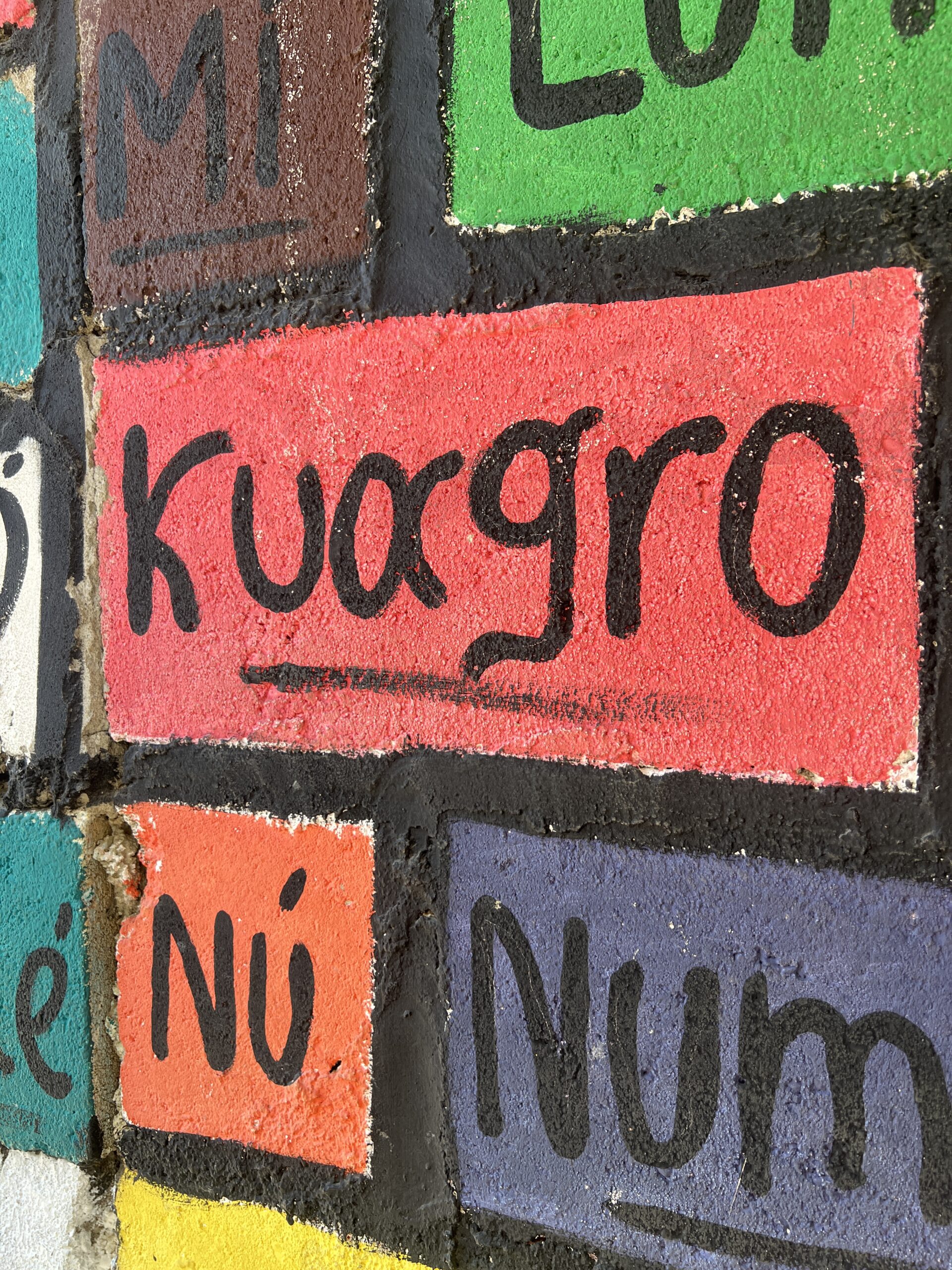
This is due to the dominance of Spanish as the primary language of education, administration, and communication in Colombia. This has led to a decline in the use of Palenquero among younger generations. Spanish is typically spoken in Cartagena, so parents and grandparents would make a conscious effort to ensure that Palenqueros is spoken in homes.
Now, the schools in Palenque are making it mandatory to teach youth from 1-5 years old to high school.
Palenque is the only town in Colombia that teaches three languages. The others only have Spanish and English.
Discussions About Possible Reparations
The argument for reparations in Palenque is grounded in the historical injustices and systemic discrimination experienced by the Afro-Colombian community over time since being forcefully brought to the Americas.
We learned that there had been big talks about reparations, which could be implemented in a variety of ways, including economic compensation, land restitution, access to education and healthcare, and measures to promote cultural preservation and political representation.
Progress is being made with strides like Colombia’s current vice President, Francia Márquez, being Afro-Colombian and Cha Dorina Hernández, the first palenquera to reach the Congress of the Republic.
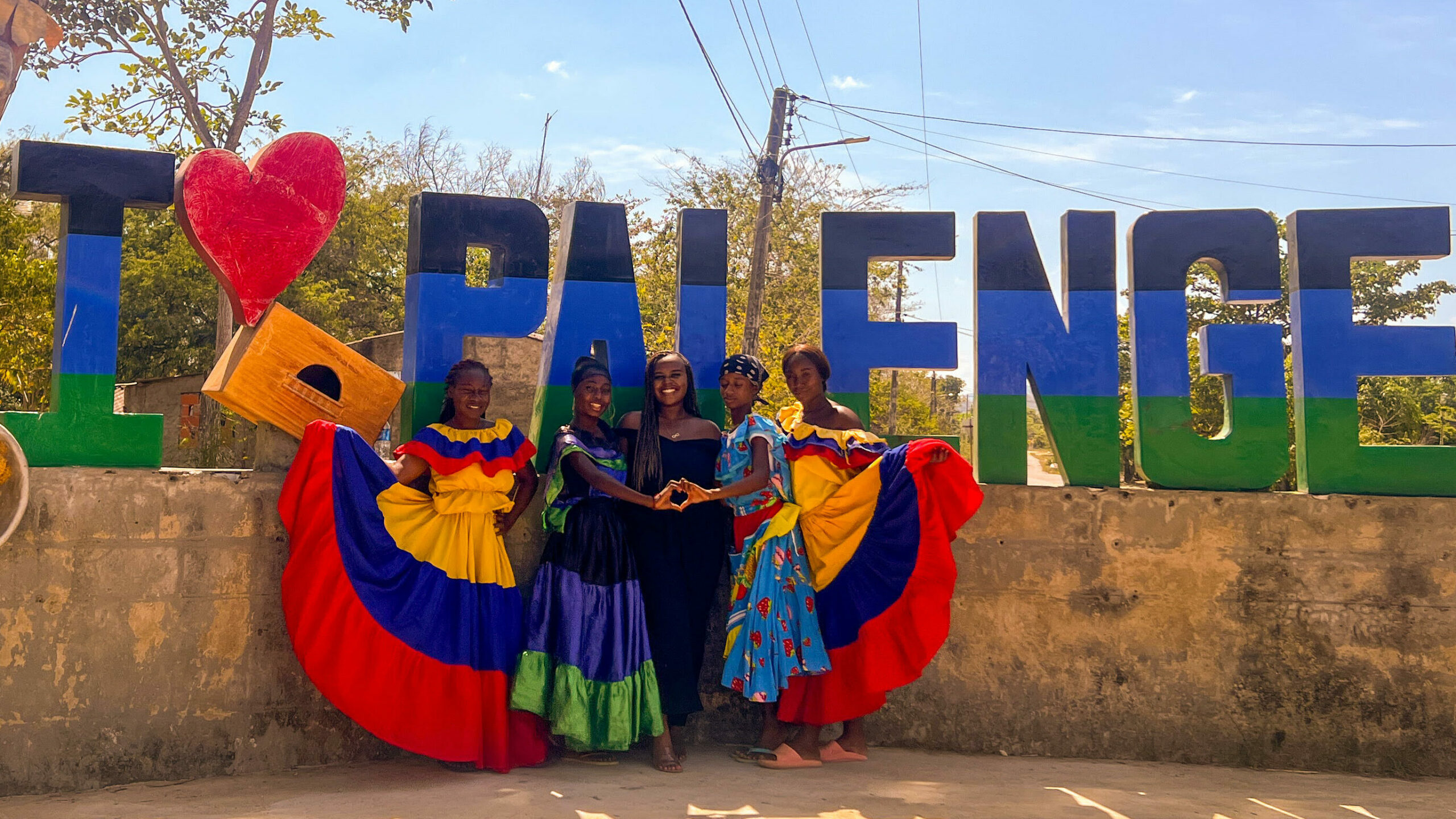
Lack of Running Water
There is no running water in Palenque. One day, there’s water and one day, there’s not, and this inconsistent flow of water causes many issues, as you can imagine.
The lack of running water in Palenque, Colombia, is a significant challenge that affects the daily lives and well-being of its residents.
It was explained that many people collect rainwater and/or collect water ten minutes away from a nearby river. These limited and often unreliable water sources can pose health risks and create hardships for residents, particularly during dry seasons or periods of drought.
Addressing the need for running water in Palenque would require effort from government authorities. This could look like investing in water infrastructure development, implementing sustainable water management practices, and providing all residents access to clean and affordable water services.
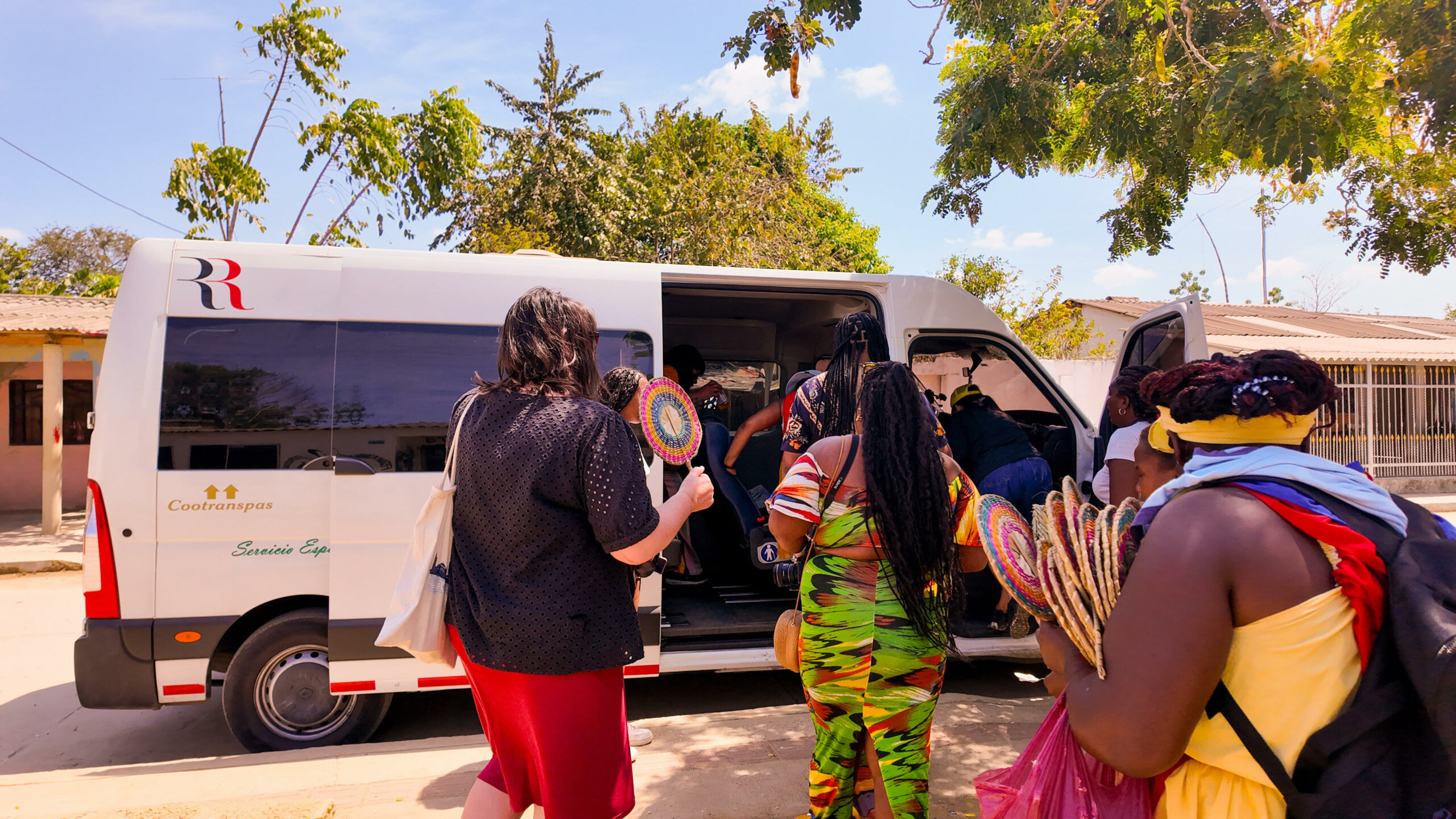
How to Visit Palenque: Available Tours
When planning a visit to San Basilio de Palenque, there are various tour options available to choose from.
Most of the tours I’ve seen include the same offerings, with others having another cultural element added to their itinerary.
In this section, I will share a list of tours available to go to Palenque and see the town for yourself:
- San Basilio de Palenque Day Tour
- Cartagena: Palenque Tour of Freedom
- Palenque, a piece of Africa in Colombia
- Palenque History Tour
- Palenque
- Visit a piece of Africa in Colombia with a Native Host
- Experience the Africa hidden in Colombia
- Palenque, Queens and Kings land, from violence to freedom
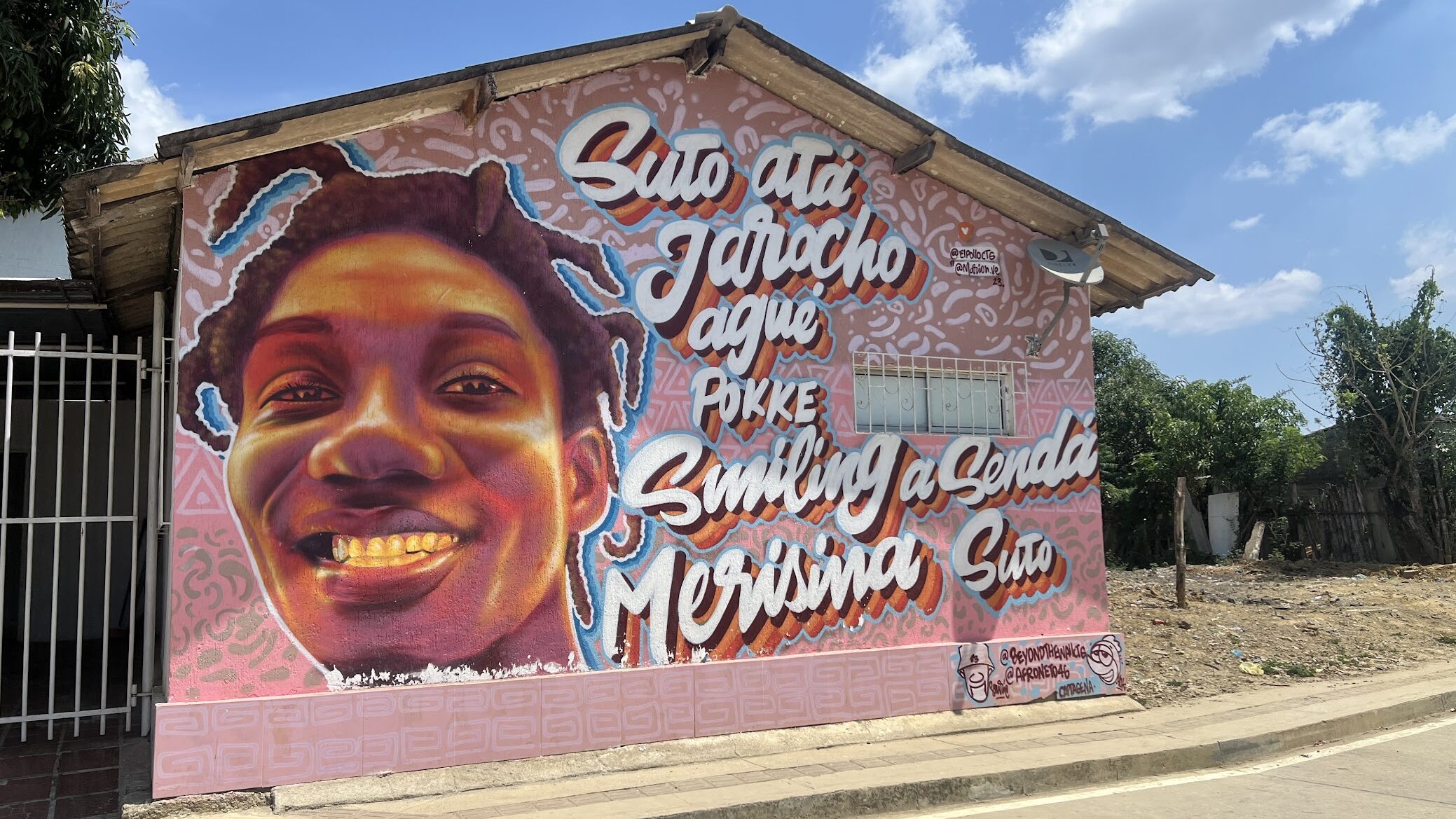
What Should I Bring With Me When Visiting San Basilio de Palenque?
Your packing list to Palenque should mainly take into account the extremely hot weather. This is why I recommend bringing the following:
***Sandals are okay to wear!
Other Tips for Visiting Palenque
Read about Palenque before your tour
To really grasp the importance of Palenque and appreciate every aspect during your visit, I highly recommend reading up on the history of Palenque before visiting.
Understanding the historical significance of Palenque being the first free African town in the Americas will give you the context and appreciation for the village’s cultural significance.
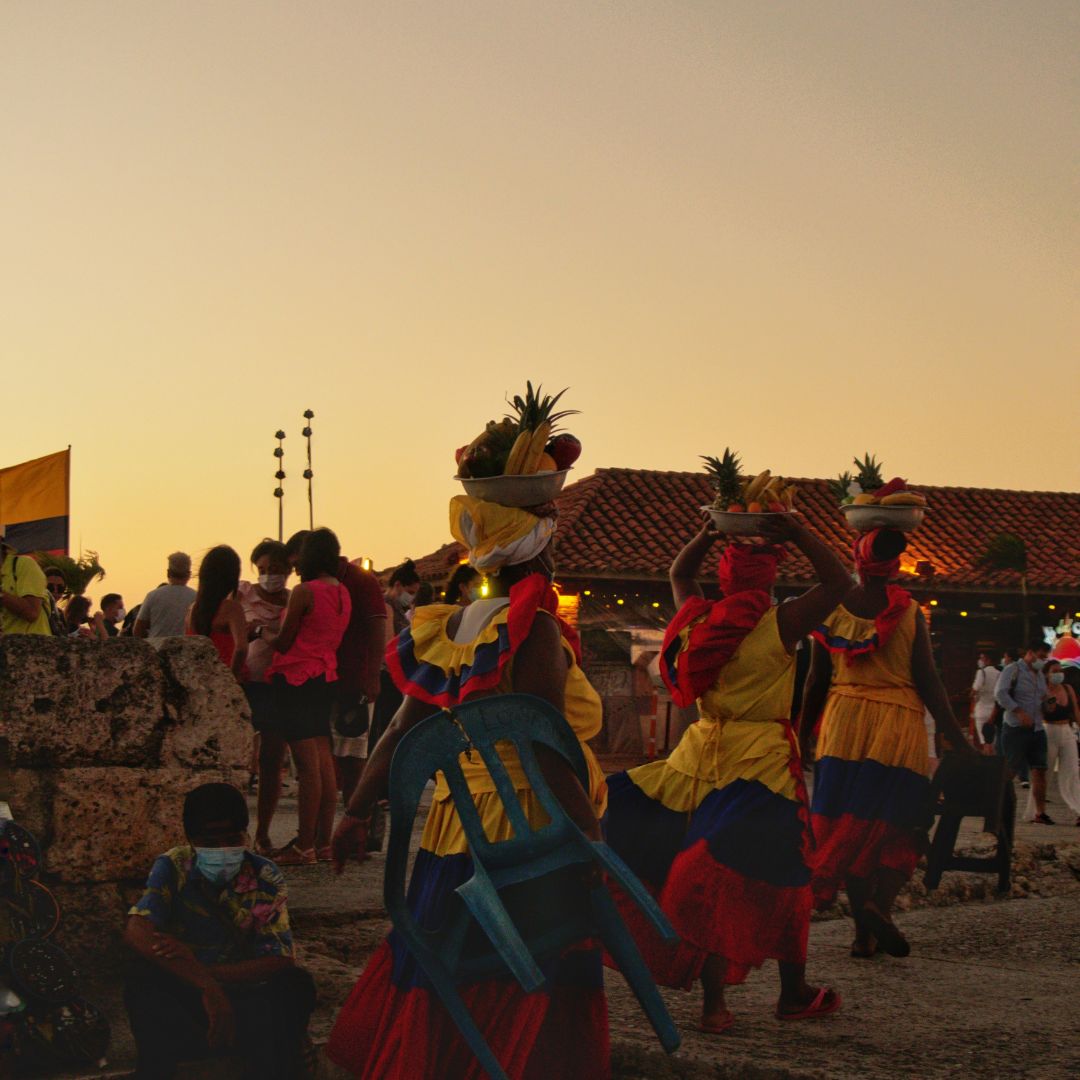
Photo Credit: Andrea F
Go with a tour guide
While I’m sure you could just go to Palenque and walk around, visiting Palenque with a tour guide offers numerous advantages that enhance the overall experience.
Visiting Palenque with a tour guide offers numerous advantages that enhance the overall experience. Guides are typically locals or experts who have in-depth knowledge of Palenque’s history, culture, and traditions.
Also, if you don’t speak Spanish, tour guides serve as interpreters and facilitators so you understand what is being discussed.
Aim to join a small group for a more intimate experience
Small group tours allow for more meaningful connections with Palenque and its people. It also allows the group to move around more easily than it would in a larger tour group.
There were only seven of us in my travel group, and even that felt a bit crowded for me at times. I think up to five people, if possible, would be the sweet spot, so if you find a tour, you can ask the host how many people are typically in these groups.
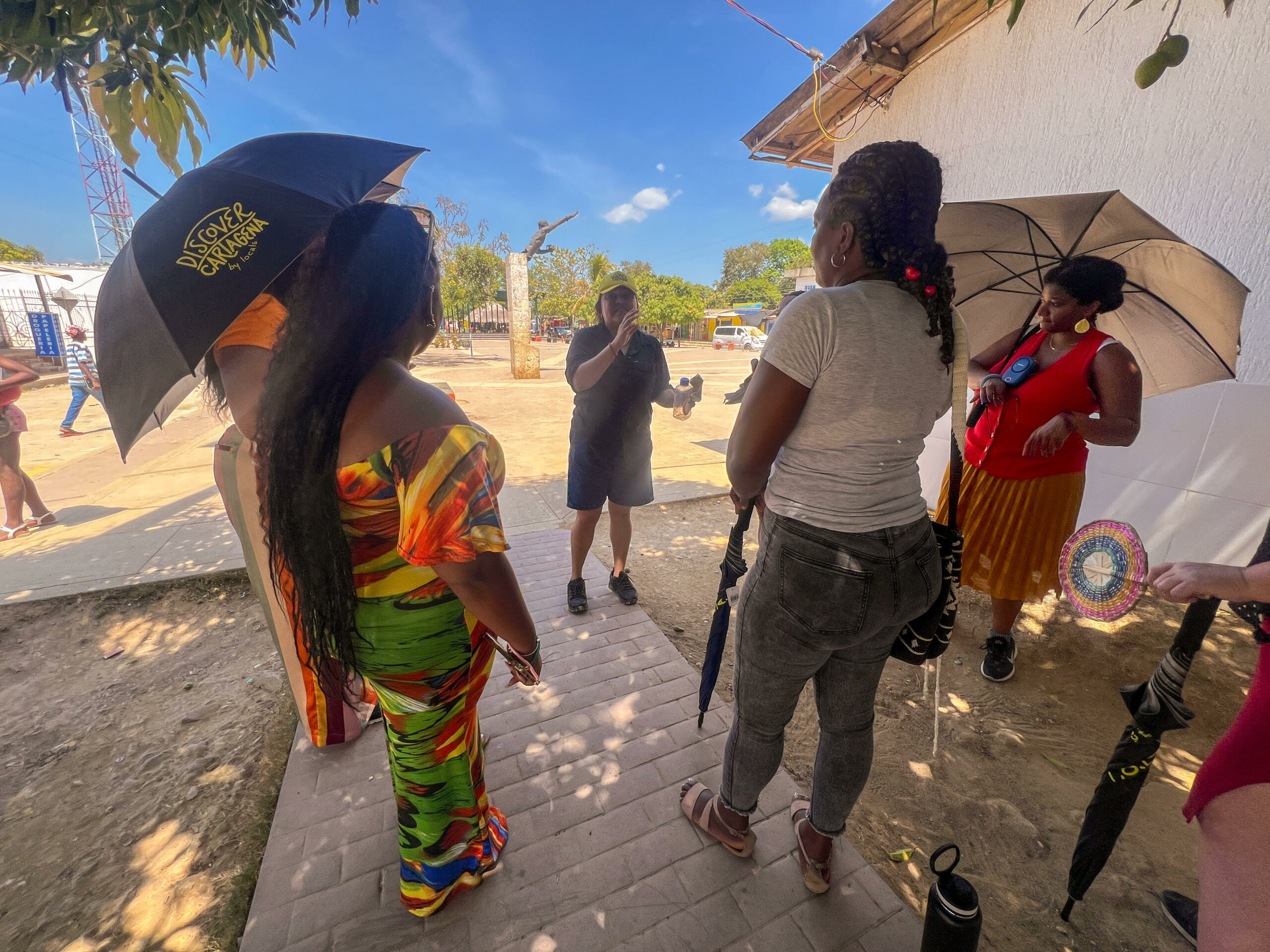
Frequently Asked Questions About San Basilio de Palenque
What is special about San Basilio de Palenque?
San Basilio de Palenque is a historic Afro-Colombian village located near Cartagena, Colombia. It is renowned as the first free African town in the Americas, founded by escaped slaves in the 16th century.
How do I get to Palenque from Cartagena?
You can take a car or bus from Cartagena. The journey takes about 1.5 hours, depending on traffic.
Is San Basilio de Palenque safe to visit?
San Basilio de Palenque is generally safe for tourists, but it’s essential to be careful and respect local customs and regulations. You will likely have a tour guide and won’t have any issues, as tourists usually don’t. The town feels very safe and exudes the small-town community feel.
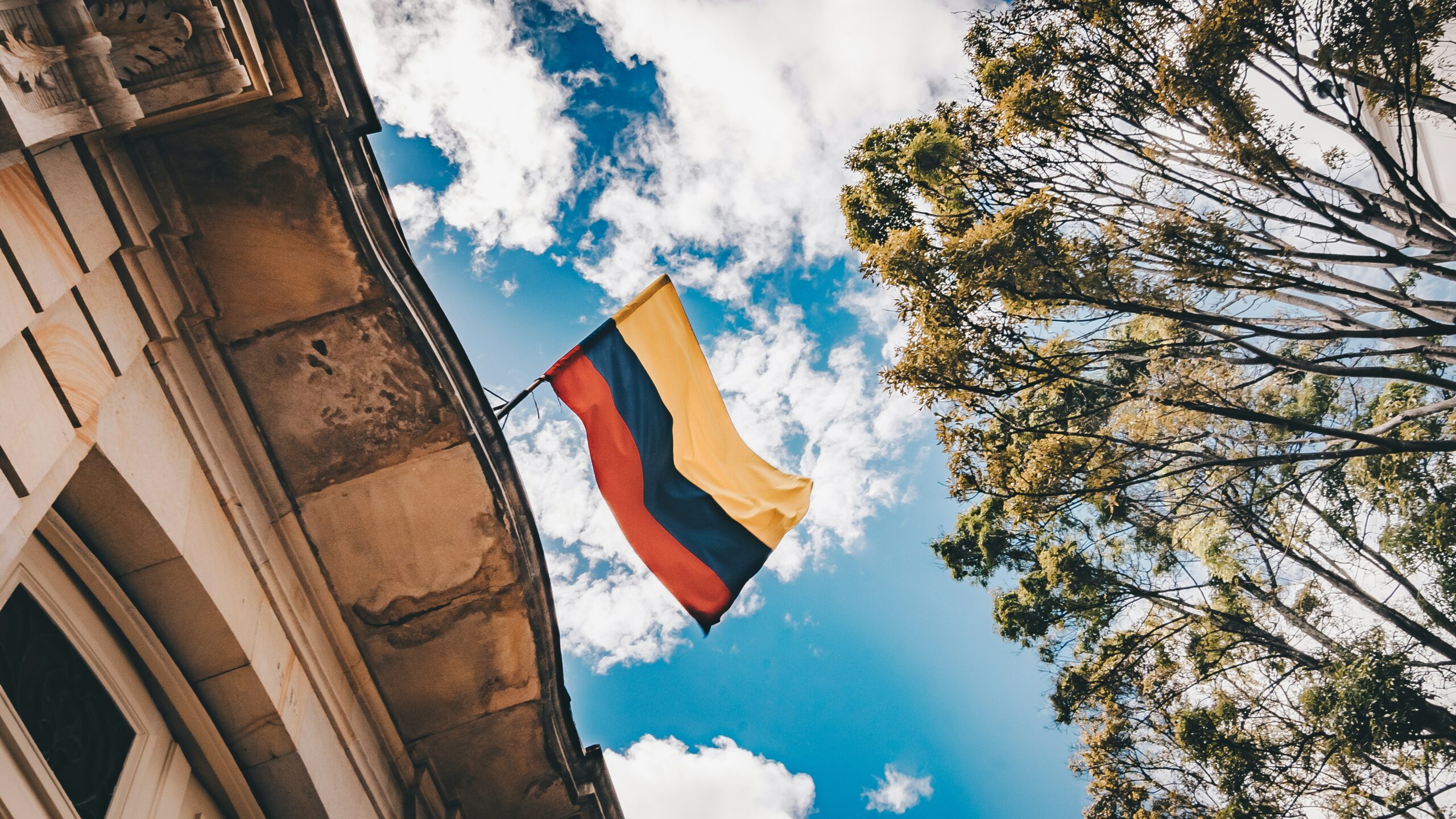
Are there any cultural events or festivals in San Basilio de Palenque?
Yes, San Basilio de Palenque hosts several cultural events and festivals throughout the year, celebrating Afro-Colombian heritage, music, dance, and cuisine.
As a visitor, you can check with tour guides who are in contact with community leaders to learn when the next event will take place and align your tour dates to visit during that time.
How can I support the community of San Basilio de Palenque?**
Visitors can support the community of San Basilio de Palenque by patronizing local businesses, purchasing handmade crafts and souvenirs from artisans, respecting local customs and traditions, and practicing responsible tourism.
When you visit Palenque, donations are expected to go toward the upkeep of the traditions and maintenance of the town and its infrastructure.
Your support contributes to the preservation of Palenquero culture and helps sustain the livelihoods of local residents.
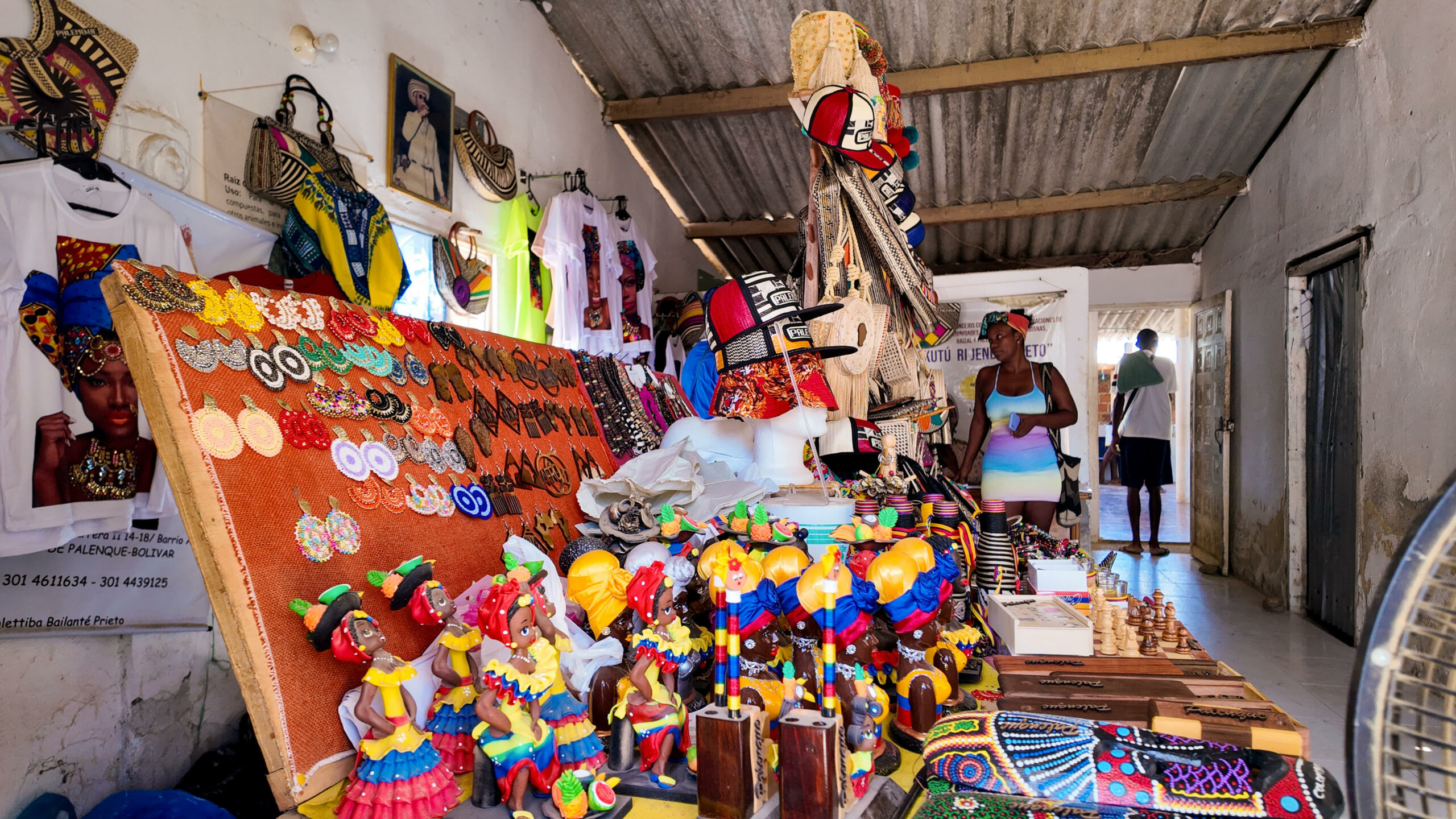
Final Thoughts on Palenque
My visit to San Basilio de Palenque was inspiring, informative, and empowering. As a traveler, one of the absolute greatest honors I have had is learning about and visiting the very places that were never discussed in classrooms growing up. Being exposed to history that I would otherwise likely have never learned about.
San Basilio de Palenque stands as a testament to the resilience, culture, and spirit of its people. From its origins as a refuge for escaped slaves to its vibrant present-day community, Palenque embodies the enduring legacy of freedom and cultural heritage.
I’m leaving Palenque with yet another powerful lesson and more knowledge about the contributions of enslaved Africans. I’m grateful that Palenque still exists for people to visit, and I hope to carry with me the lessons of Palenque—of strength in adversity, unity in diversity, and the enduring power of culture to uplift and inspire.
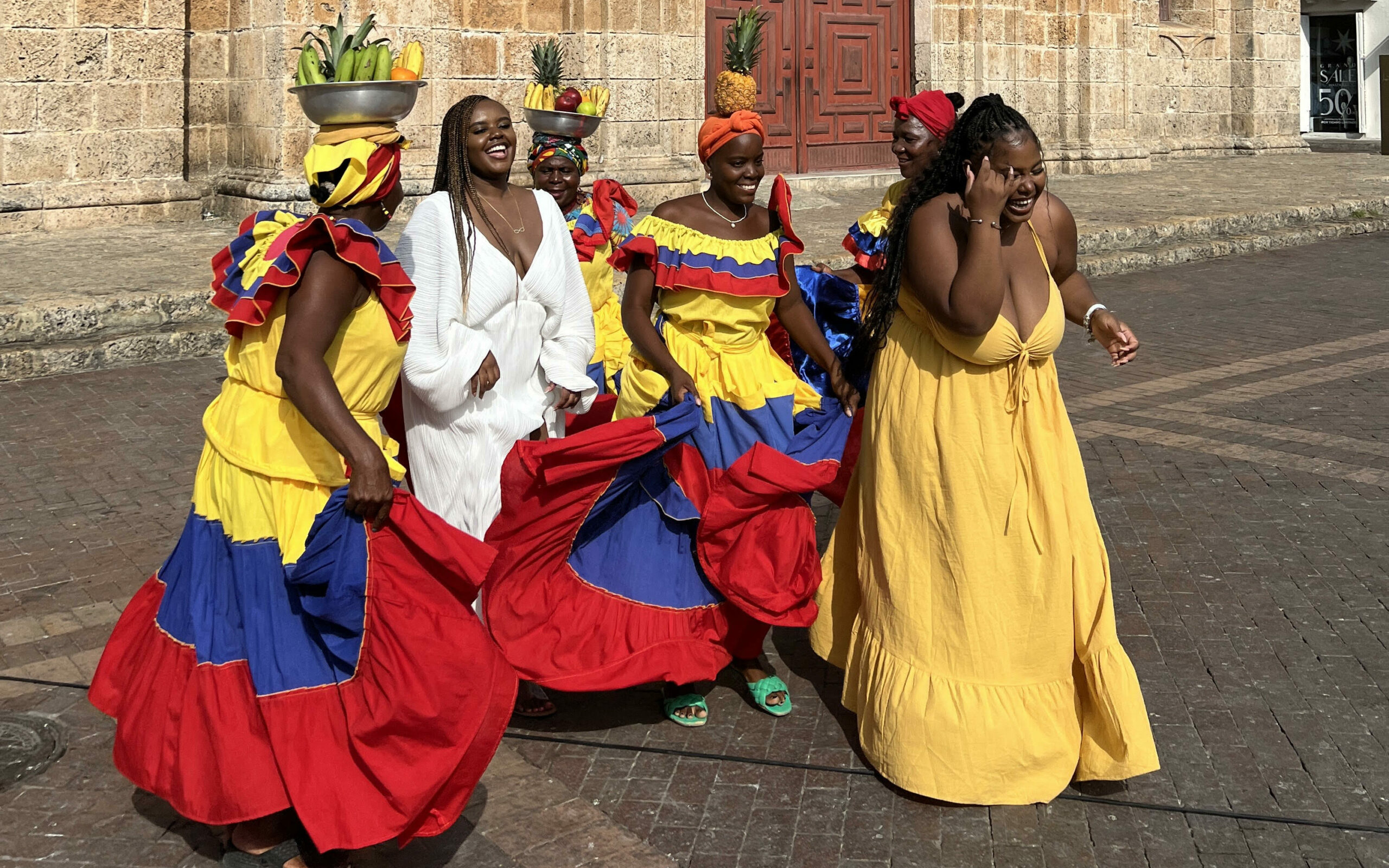

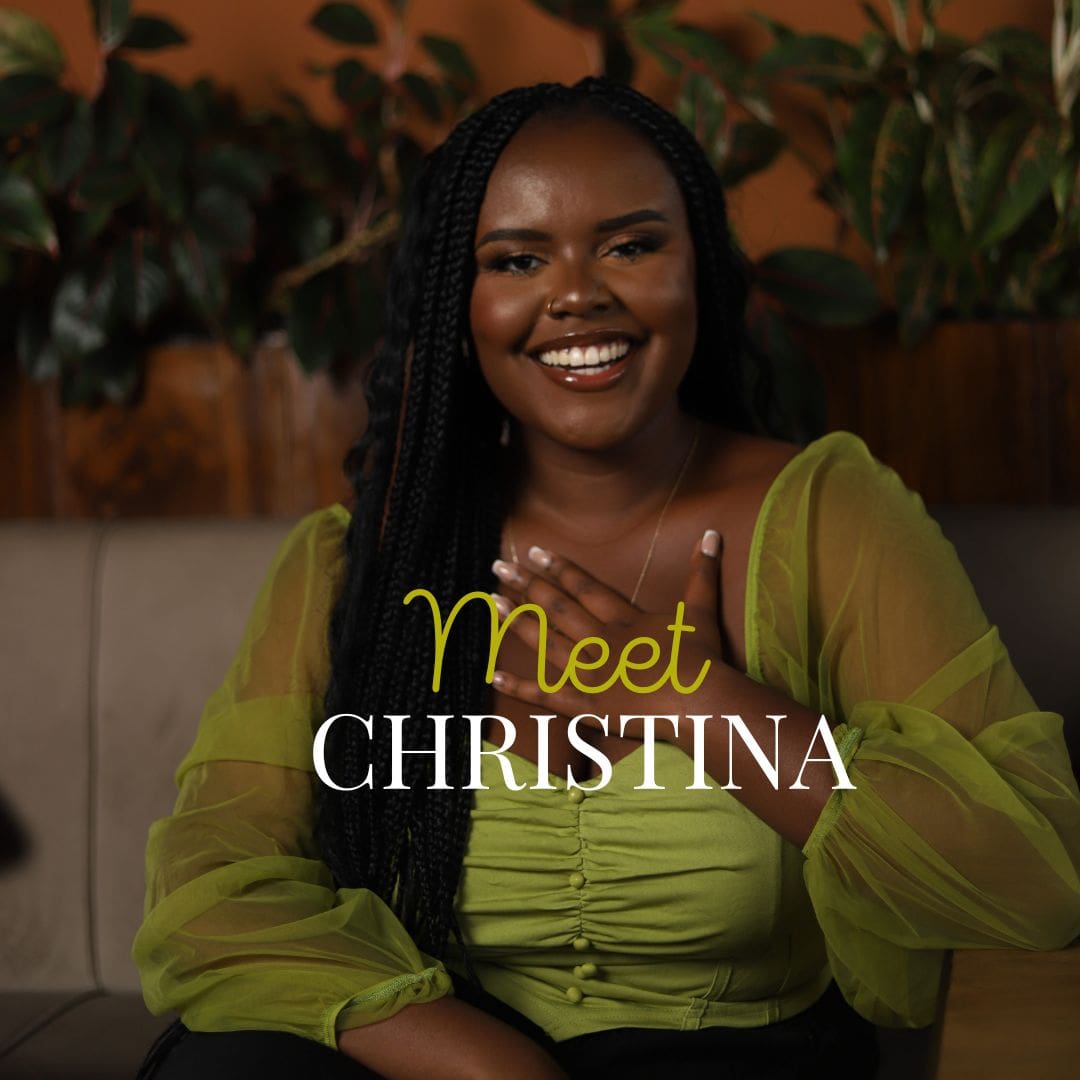





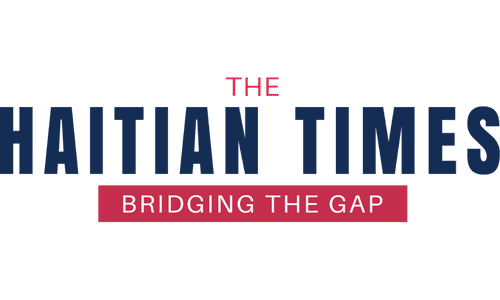


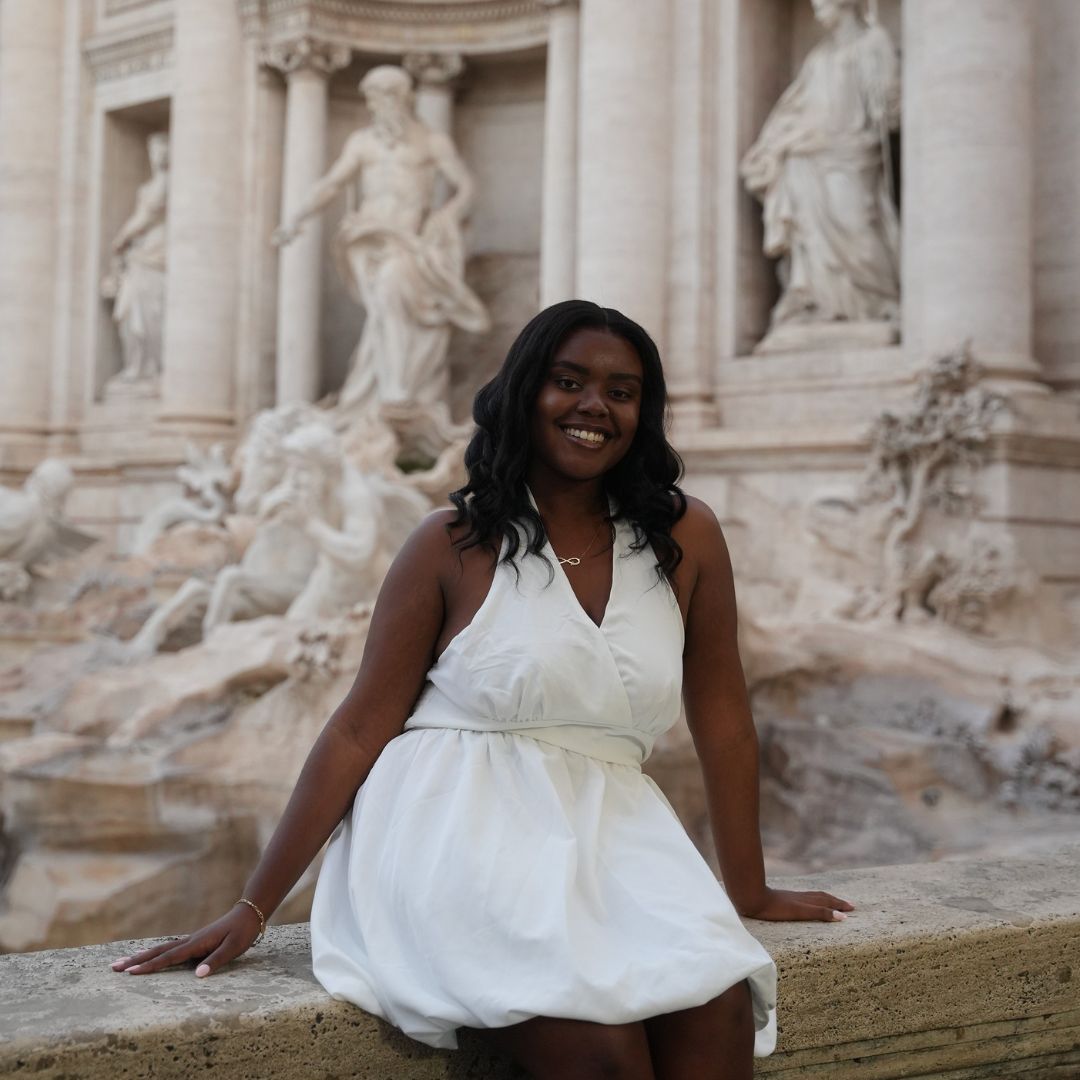
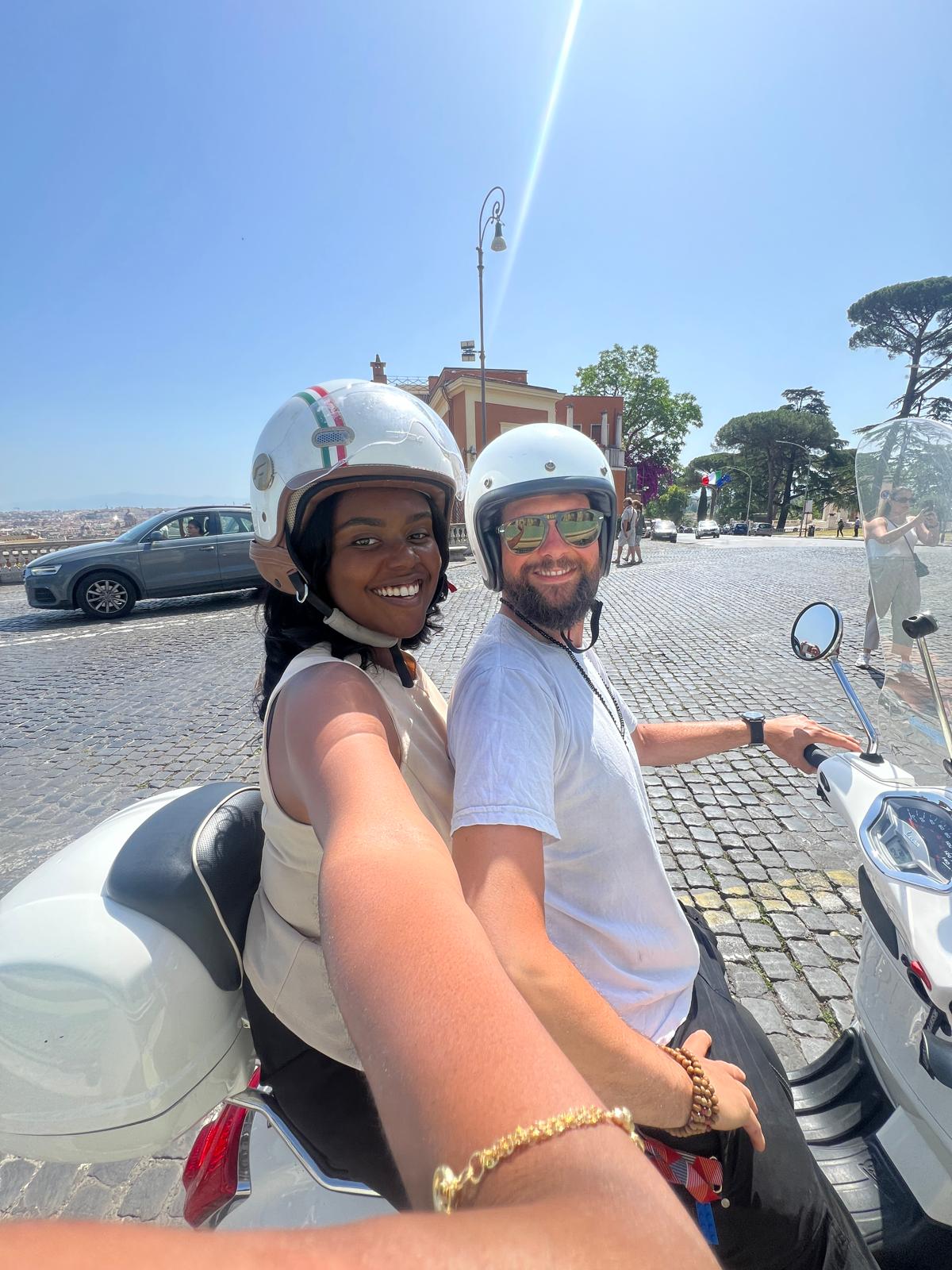
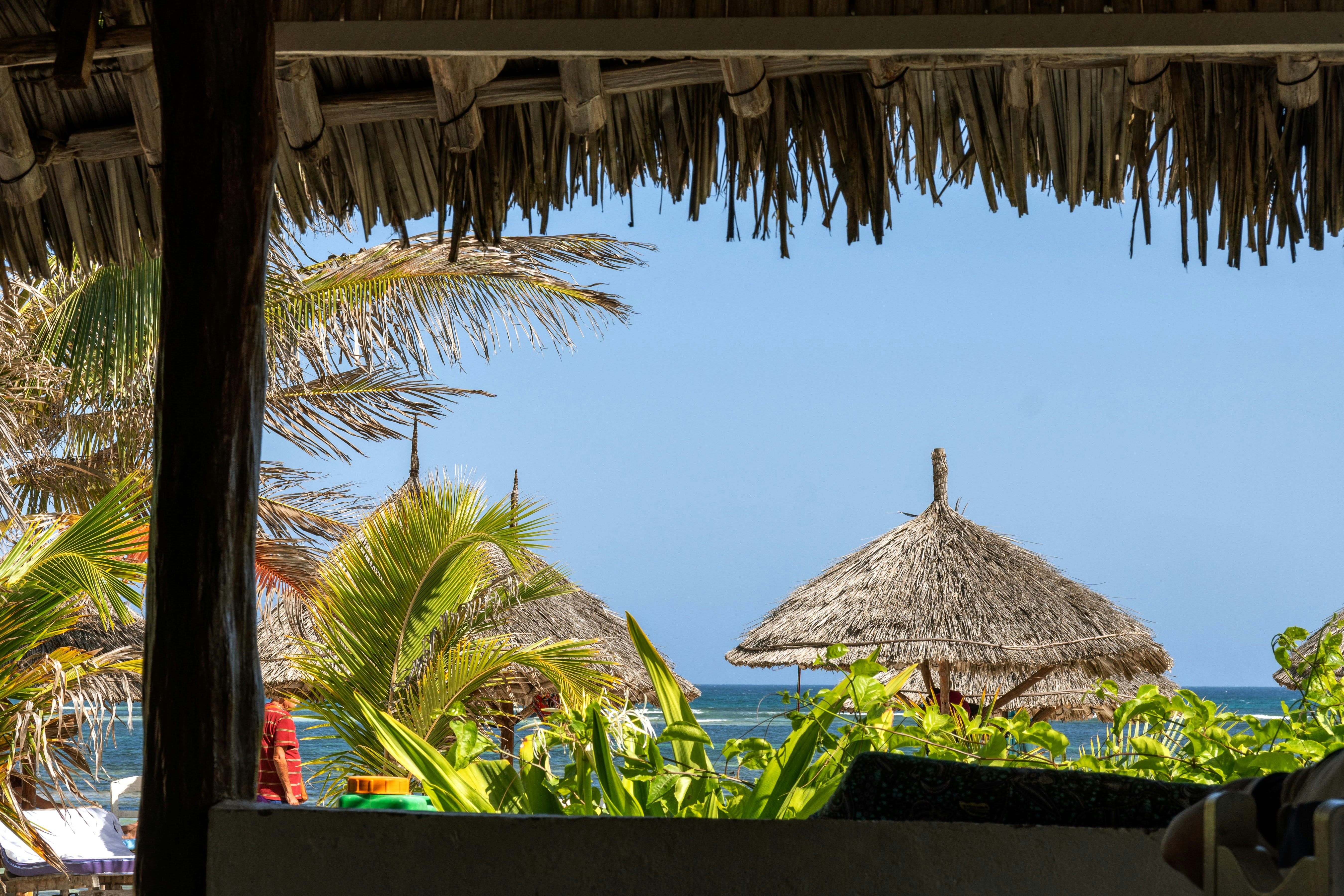
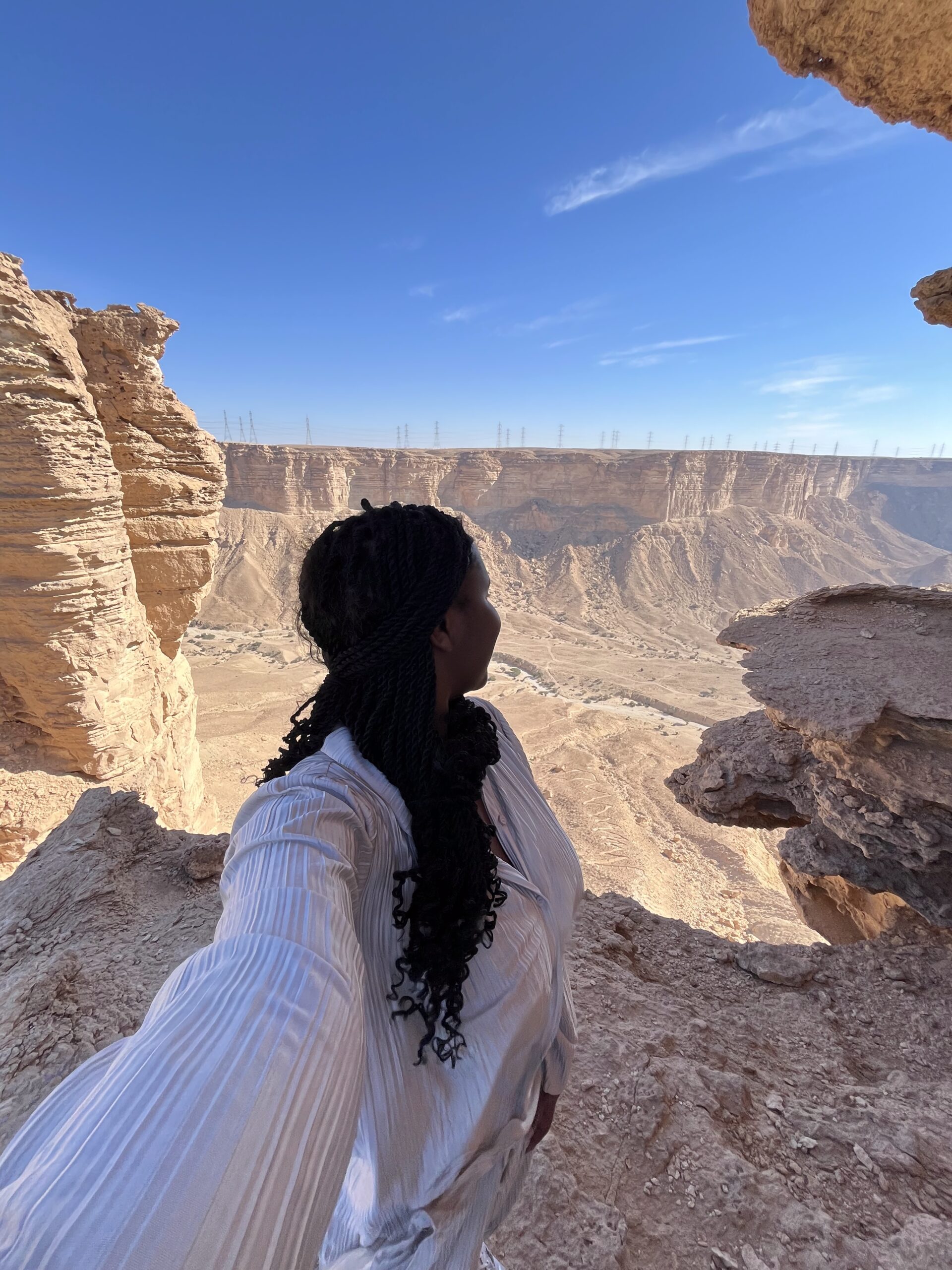

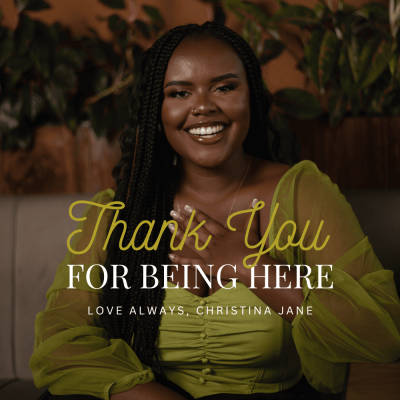
20 Responses
I’m a huge fan of your work! Colombia is on my bucket list, and thanks to you, I’ll be adding Palenque to one of the cities I plan to visit. As always, thanks again for your thorough articles. They are fantastic!
Hi LaTosha,
Aww, this means the world to me! Thank you for letting me know what you think about the blog post! Palenque is so special and holds so much history, so I know you’ll love learning more while there!
This is such a great post. So many details! Thank you!
That’s what I do best, thank you 🙂
Thank you for introducing me to this special place, Palenque sounds wonderful!
It was everything! Hope you get to visit!
This was so informative, I feel like I went on the tour with you after reading this. I’m definitely adding Palanque on my Colombia to do list now, can’t be missing out on a place with so much historical significance & beautiful culture.
Hi Anisa,
You definitely can’t!! It took up a whole day on our short trip, but was so worth it!
I loveee learning about African diaspora outside the U.S. This was such an informative and beautiful write up. I can’t wait to visit Palenque!
Thank you, you’ll love it!
I want to visit San Basilio de Palenque, Colombia, how do I start
Hi Ajayi,
I have a section in this blog post titled “How to Visit Palenque: Available Tours” and list a lot of different day tours you can take to visit Palenque!
One day I have to visit Palenque
I truly hope you get the chance to!
I am looking forward to traveling to Buenaventura in Feburay. Your blog was very informative as I as a African male will be traveling solo.
Do you have any helpful advise for me?
I’m glad to hear that it was helpful! Sadly I didn’t visit Buenaventura while in Colombia so I wouldn’t be much help with planning.
However, I do have a travel guide on my blog on Cartagena if you decide to visit there with lots of tips!
Thank you for article. I’m heading to Cartagena and now this place is on my list for a day trip. I had no idea place like this still existed.
Hi Su,
It’s one of the places I would consider a MUST DO while in Cartagena and a day trip is perfect!
My favorite parts was the dance ritual by the youth and interactive aspect of it. They let you play the drums and all.
The local Doctor was a treasure of holistic knowledge. Don’t get me started on the grilled fish and coconut rice! Made my second trip back there just for that😁
Yess everything was amazing! Such a great experience for sure and loved the food 🥰 Thank you for sharing your experience!